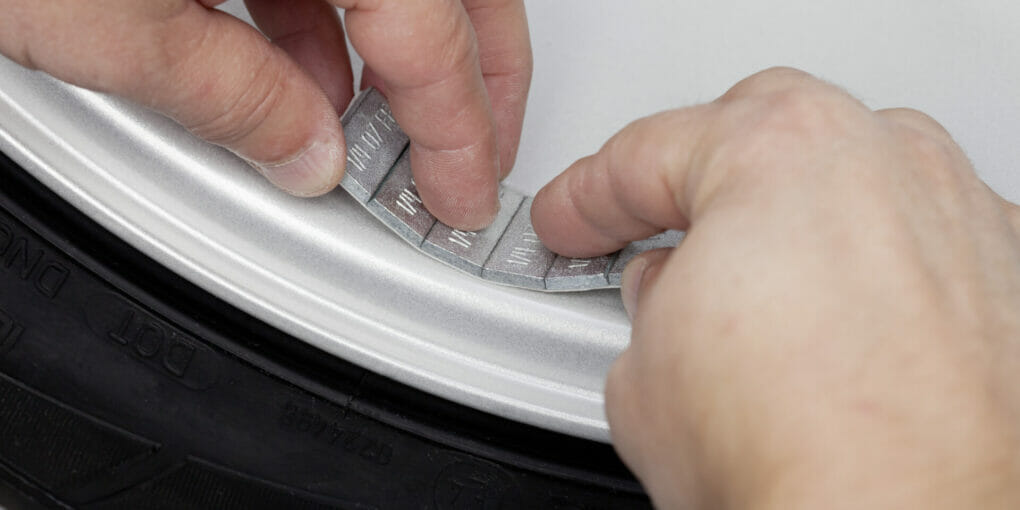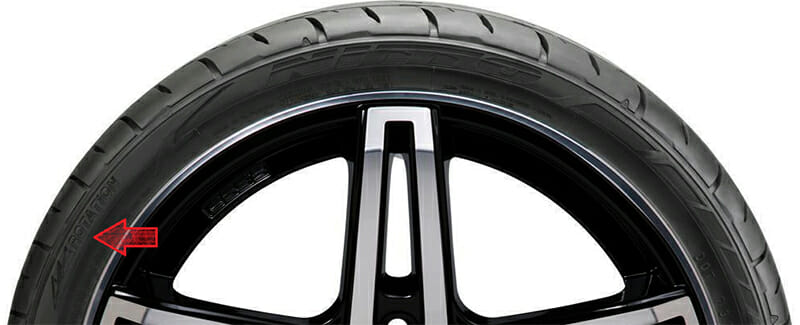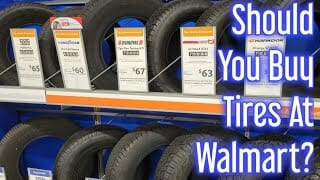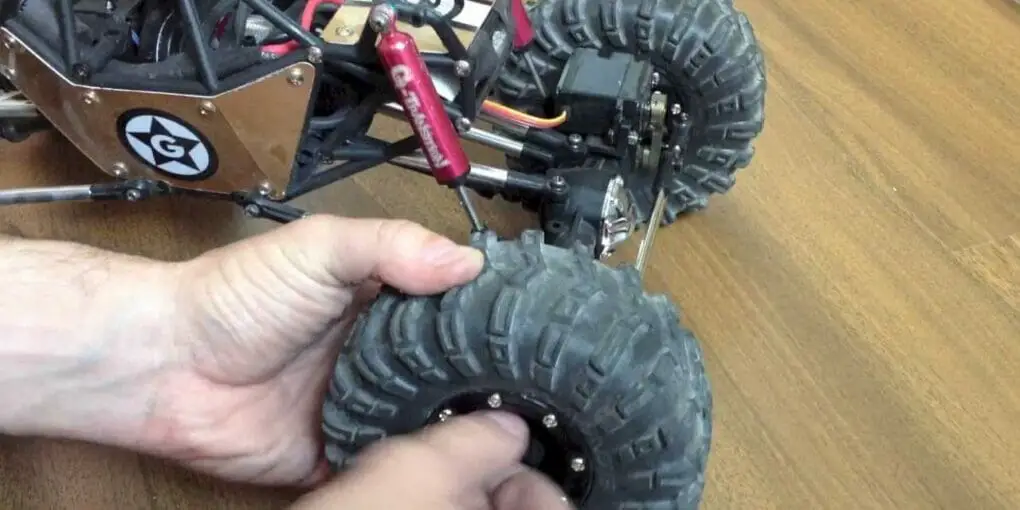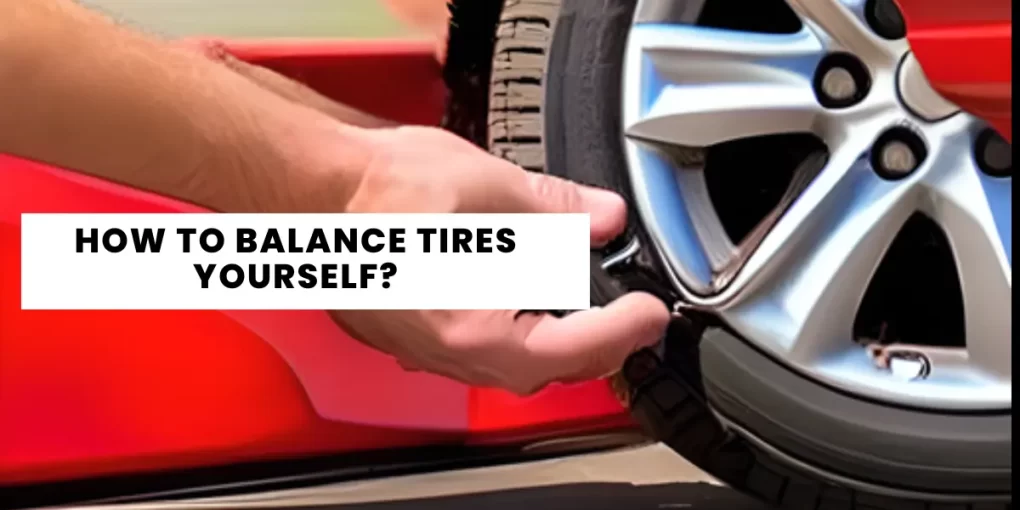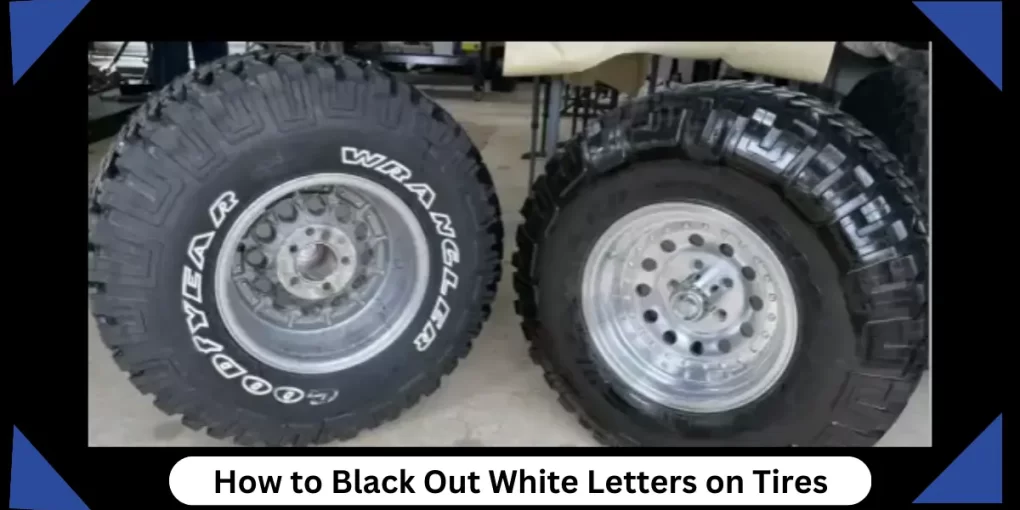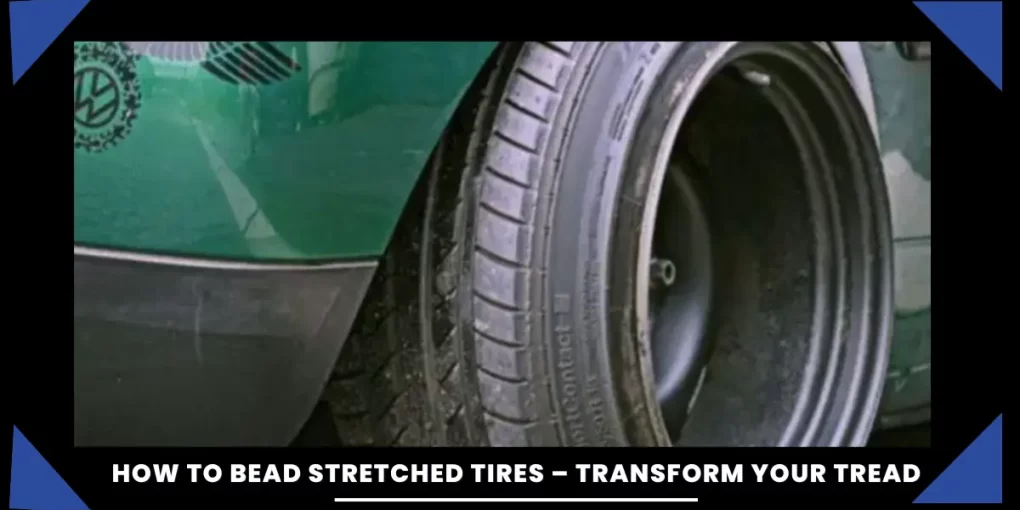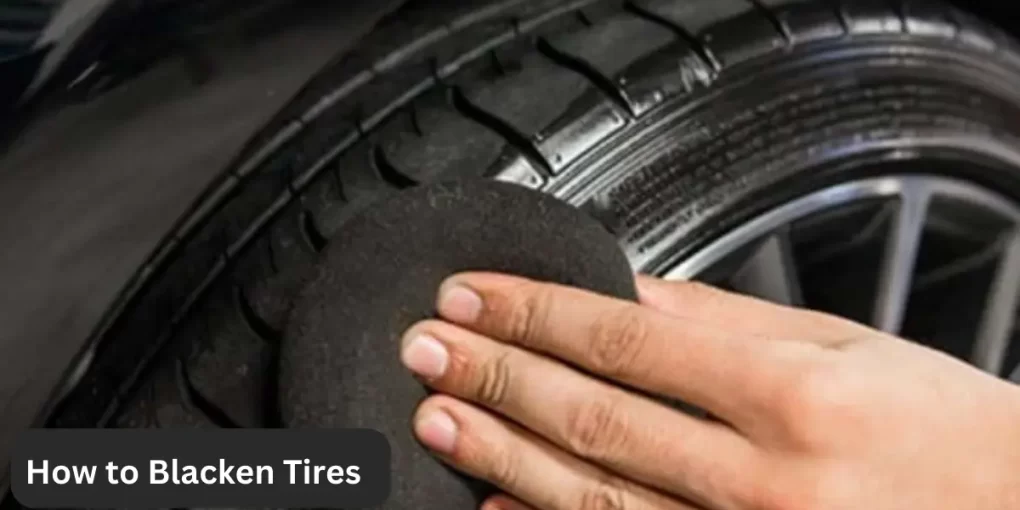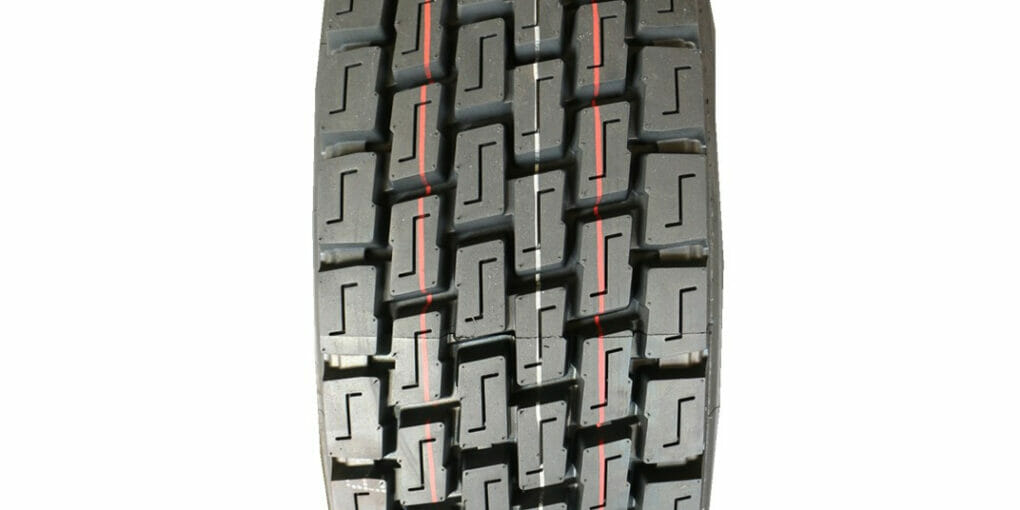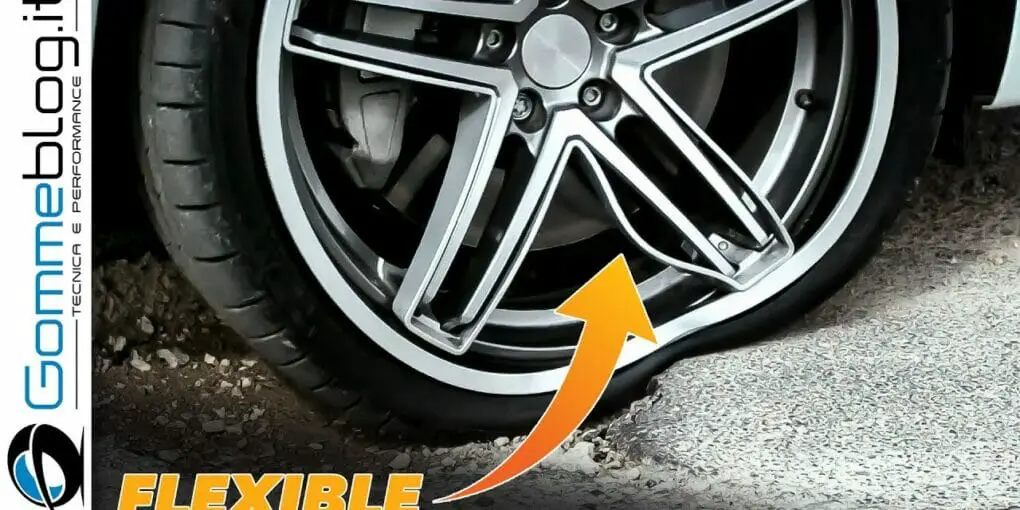Author Archives: David V. Williamson
- Home
- Author's Archive:
How to Balance Tires With Stick on Weights – Balancing Act Gone Wrong
Do you feel a vibration in your car while driving? It could be due to unbalanced tires. Balancing your tires is an essential part of car maintenance that ensures a smooth and safe ride. However, taking your car to a mechanic to balance your tires can be expensive. Did you know that you can balance your car tires with stick-on weights at home?
Balancing tires involves adding small weights to the rims of your tires to evenly distribute the weight around the wheel. Traditionally, these weights were attached with clips, but nowadays, stick-on weights are becoming more popular as they are easier to use and less visible. Balancing tires is crucial as it improves handling, extends tire life, and prevents uneven wear.
In this article, we will guide you on how to balance your tires with stick-on weights at home. With a few tools and some basic knowledge, you can save money and time by doing it yourself. So let’s get started and learn the step-by-step process of balancing your tires with stick-on weights.
Wheel Balancing with Tape Weights – Learn How to Balance Tires Effectively
How Do You Balance Sticky Tire Weights?
There are a few things to keep in mind when trying to balance sticky tire weights. First, make sure the surface of the sticky weight is clean and dry. If there is any dirt or debris on the surface, it will throw off the balance.
Second, use a low-profile weight if possible. These weights are thinner and don’t protrude as far from the surface of the tire, making them less likely to catch on something and come off.
Finally, be careful not to put the weights too close to the edge of the tire; they could fall off if they get bumped.
How Do You Balance a Wheel With Weights?
If your vehicle is vibrating or the steering wheel is shaking, it may be time to balance your wheels. Wheel balancing involves adding small weights to the rim of each tire until the weight of the tire and wheel assembly is evenly distributed.
This ensures that the tires rotate smoothly and helps improve fuel economy and handling. Most tire shops offer wheel-balancing services, but you can also do it yourself at home with a few simple tools.
First, you’ll need to purchase a wheel-balancing kit from an auto parts store. These kits come with a set of adhesive weights and instructions for how to apply them.
Next, jack up your car and remove one of the front wheels. Place the wheel on a set of balancing scales or hung it from a beam so that it can rotate freely. Spin the wheel slowly and observe where it stops naturally.
This is where the heavier part of the tire/wheel assembly is located. Now, add adhesive weights to the opposite side of the wheel until the amount of weight on each side cancels out, making the overall assembly balanced.
For example, if one side weighs 3 ounces more than another, add 1/2 ounce weights to three different locations on the opposite side of the wheel until it balances out (1/2 + 1/2 + 1/2 = 3). Reattach the balanced wheel to your vehicle and repeat this process for all four wheels.
How Can I Balance My Tires Without a Balancer?
If your vehicle is experiencing vibrations, it may be due to unbalanced tires. Tires can become unbalanced for a variety of reasons, such as hitting a pothole or curb. Unbalanced tires can cause premature wear on suspension and steering components, so it’s important to address the issue as soon as possible.
There are two ways to balance tires: static and dynamic. Static balancing involves adding weights to the outside of the tire until it is balanced. Dynamic balancing involves spinning the tire on a machine that measures where the heavy spots are and adjusts accordingly.
Most tire shops will use a dynamic balancer, but if you don’t have access to one, you can balance your tires yourself using static balancing methods. Here’s how:
Find the light spot on each tire. The light spot is where the least amount of weight is required to balance the tire. To find it, hold the tire horizontally at eye level and slowly rotate it. When you find the light spot, mark it with chalk or a marker so you know where to add weights later on.
Add wheel weights to the opposite side of each tire’s light spot, making sure that they are evenly distributed around the circumference of the tire. You can purchase wheel weights from most auto parts stores.
If your vehicle has hubcaps or wheel covers, you’ll need to remove them before adding weights.
Why Do People Put Weights on Their Tires?
Weights on tires are used to help with traction. When a vehicle is stuck in snow or mud, the extra weight helps the tires get better grip on the ground so the car can move forward. Tire weights can also be used to balance out a car that is pulling to one side.
This is caused by an uneven distribution of weight around the tire, which causes it to spin more slowly and creates more friction on one side than the other. By adding weights to the inside or outside of the tire, you can adjust the balance and make the car drive straight again.
If you live in an area with a lot of snow, putting weights on your tires may be something you want to consider. It can give you some extra peace of mind knowing that your car will be able to handle whatever winter throws your way.
Balancing Weights for Tires
It’s important to maintain the proper tire pressure in your vehicle. This helps with fuel economy and extends the life of your tires. You can check your owner’s manual to find the recommended tire pressure for your vehicle.
If you’re carrying a lot of weight in your car, you may need to adjust the tire pressure accordingly. The heavier the load, the higher the tire pressure should be. You don’t want to overload your tires, so make sure you consult your owner’s manual or a professional if you’re unsure about how much weight is too much.
Keeping an eye on your tire pressure and ensuring that it’s balanced correctly will help keep you safe on the road and save you money in the long run!
How to Hammer on Wheel Weights
One of the most common ways to balance a wheel is by adding wheel weights. By hammering on the weights, you can evenly distribute them around the circumference of the wheel. This will help to create a more balanced and smoother ride. Here’s how to do it:
First, you’ll need to identify where the imbalance is. You can do this by spinning the wheel and observing where it wobbles. Once you know where the problem area is, mark it with a piece of tape or chalk so you know where to add the weight.
Next, take your hammer and lightly tap around the circumference of the wheel until you find a spot that sounds hollow. This is where you’ll want to add your weight.
Place the weight on top of the wheel at your marked spot, and then use your hammer to gently tap it into place. Be careful not to overdo it you don’t want to dent or damage your wheel!
Repeat this process until you’ve added enough weights to balance out your wheel. Then spin it again and see how much better it rides!
How Many Weights Should Be on a Tire
There’s no definitive answer to this question – ultimately, it depends on the weight of your vehicle and how much weight your tires can safely carry. However, as a general guideline, you should aim to have at least 200-300 pounds on each tire. This will help ensure that your tires are able to grip the road properly and won’t slip or skid when you’re driving.

Frequently Ask & Questions
If you’re looking for a way to improve the performance of your vehicle, balancing your tires with stick-on weights can help. This process involves attaching small weights to the rim of your tires to ensure that they are evenly weighted and balanced.
However, if you’re new to this process, you may have some questions about how to do it correctly.
In this FAQ guide, we’ll answer some common questions about balancing tires with stick-on weights, so you can ensure your vehicle is running smoothly and efficiently.
What are the benefits of using a balance weight?
Balance weights are an important tool for maintaining the optimal performance of a vehicle. They help to ensure that the weight of the car is evenly distributed, which helps to improve fuel efficiency and reduce wear on tires and other components.
Additionally, balance weights can help to reduce vibrations in the vehicle, making for a smoother ride. Finally, balance weights can also help to improve handling and stability by helping to keep the car’s center of gravity low.
By ensuring that the car’s weight is properly balanced, drivers can enjoy a safer and more comfortable ride.
How do I use a balance weight?
A balance weight is a tool used to help measure the weight of an object. To use a balance weight, first place the object on one side of the balance scale. Then add weights to the other side of the scale until it balances out.
The number and size of weights that you need to add will depend on how much your object weighs. Once you have added enough weights, you can read off the total weight from the scale.
It is important to make sure that all of your weights are uniform in size and mass so that you can get an accurate reading from your balance scale. You should also be careful not to overload your balance weight with too many weights as this could cause it to become unbalanced or even break.
Finally, make sure that you clean and store your balance weight properly after each use. This will ensure that it remains in good condition and is ready for future use.
What are the risks of using a balance weight?
The primary risk of using a balance weight is the potential for injury. Balance weights are typically used in exercises that require a great deal of physical exertion, such as squats, deadlifts, and lunges.
When using a balance weight, it is important to use proper form and technique to ensure the safety of yourself and others. Improper form or technique can lead to serious injuries, including strains, sprains, and fractures.
Another risk associated with using a balance weight is the potential for overtraining. Overuse of any exercise equipment can cause fatigue and muscle soreness. It is important to listen to your body and take breaks when needed. If you experience any pain or discomfort while exercising with a balance weight, stop immediately and consult your doctor.
Finally, it is important to choose the right size balance weight for your needs. Using too much or too little weight can affect your performance and increase the risk of injury.
Conclusion
If you want to know how to balance tires with stick on weights, then you’ve come to the right place. Stick on weights are a great way to keep your tires balanced, and they’re relatively easy to install. Here’s what you need to do:
First, find a spot on each tire where the tread is even. This is where you’ll be attaching the weights.
Clean the area of any debris or dirt so that the adhesive can adhere properly.
Cut the foil backing off of the weight and apply it to the tire at the chosen spot. Repeat this process for each weight until all four tires are balanced.
Finally, check your work by driving around for a bit and making sure that there’s no vibration or shaking coming from your wheels. If everything feels good, then you’re all set!
How to Tell Which Side Tires Go on
If you have ever wondered how to tell which side tires go on your car, wonder no more. There are a few different ways that you can tell which side the tires should go on. One way is to look at the tread pattern on the tire.
The tread pattern will be different for each side of the tire. The other way to tell is by looking at the lettering on the sidewall of the tire. The lettering will be reversed on one side of the tire from the other side.
- There are a few different ways that you can tell which side tires go on
- One way is to look at the tread pattern
- If the tread is pointing towards the outside of the vehicle, then it goes on the right side
- If the tread is pointing towards the inside of the vehicle, then it goes on the left side
- Another way to tell is by looking at the sidewall of the tire
- There will be an arrow on one side that indicates which direction the tire should be facing
What Happens If You Put Directional Tires on the Wrong Way
If you put directional tires on the wrong way, it can cause a number of problems. The most serious problem is that it can cause the tire to come off the rim while you’re driving. This can obviously be very dangerous.
Another problem that can occur is that the directional tires will not grip the road as well as they should. This can lead to decreased handling and braking, and increased risk of accidents.So, if you have directional tires, make sure to install them correctly!
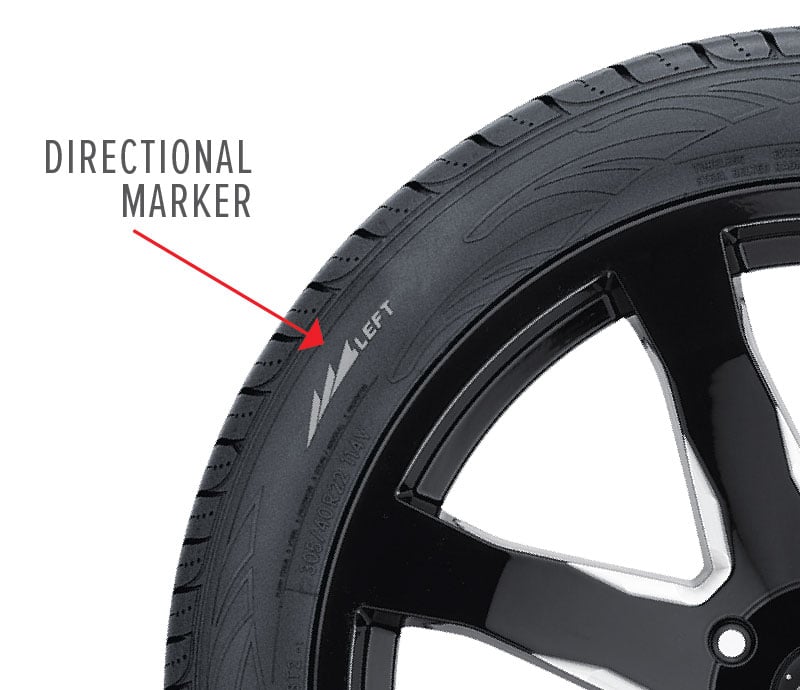
Credit: www.lesschwab.com
How Do You Tell If Your Tires are on Backwards?
Most people don’t realize that it’s possible to put a tire on backwards. If you do, it’s not the end of the world, but it will affect your driving. Here are some ways to tell if your tires are on backwards:
1. Check the sidewall.If you look at the sidewall of the tire, there should be a small arrow pointing in the direction of rotation. If the arrow is pointing in the opposite direction, then your tire is on backwards.
2. Look for wear patterns.Another way to tell if your tires are on backwards is to look at the wear patterns. If you see unusual wear patterns, such as more wear on one side of the tire than the other, then it’s likely that your tire is on backwards.
3. Pay attention to how your car drives.Lastly, if you notice that your car doesn’t handle well or feels “off,” it could be because your tires are on backwards. So pay attention to how your car feels while driving and compare it to how it normally feels – this can help you determine if something is wrong with one (or more) of your tires.
Do Tires Have Left And Right?
No, tires do not have left and right. Tires are designed to be symmetrical, so that they can be mounted on either side of the vehicle. This makes it easier for manufacturers to produce and for consumers to purchase tires.
There is no need to worry about which side of the vehicle the tire is mounted on.
Do Tires Have a Specific Side?
Tires do have a specific side. The tread on the right side of the tire is different than the tread on the left side. This is because tires rotate in opposite directions and need to grip the road in different ways.
How Do I Know Which Tire is in the Front?
There are a few ways to know which tire is in the front. One way is to look at the tread pattern. The front tires typically have a shallower tread than the rear tires.
Another way to tell is by looking at the sidewall of the tire. The front tires will usually have a smaller diameter than the rear tires. Finally, you can also check the owner’s manual for your vehicle to see where each tire is supposed to be located.
How to determine if tires are Directional and how to Rotate them!
Conclusion
If you’re ever unsure which side of the car the tires go on, there is a simple way to check. Just look at the tread on the tire. If the tread is facing out, then that’s the side that goes on the ground.
If the tread is facing in, then that’s the side that goes on the wheel.
How to Buy Tires at Walmart
The process of buying tires at Walmart is a very simple one that can be done entirely online or in-store. The first step is to determine which size and type of tire you need for your vehicle. Once you have this information, you can either go to the Walmart website and order your tires there, or you can visit your local Walmart store and purchase them in person.
If you order online, you will need to select a shipping method and provide your credit card information. You can also choose to have the tires installed at a nearby Walmart Tire & Lube Express location.
Should You Buy Tires At Walmart?
- Research what type of tires you need for your vehicle
- You can do this by looking up the make, model, and year of your car online
- Once you know what type of tires you need, check to see if Walmart carries them
- You can search for tires on the Walmart website or ask an employee in the store
- If Walmart does carry the tires you need, compare the prices with other retailers to ensure you’re getting the best deal
- When you’re ready to purchase, add the tires to your cart and checkout online or in-store
Does Walmart Install Tires for Free
If you’re looking to get new tires for your car, you might be wondering if Walmart offers free installation. The answer is yes! Walmart offers free tire installation on all tire purchases.
This includes both in-store and online purchases. So if you buy your tires from Walmart, you can rest assured knowing that they’ll be installed for free.There are a few things to keep in mind when getting your tires installed at Walmart.
First, you’ll need to make an appointment. This can be done either online or in-store. Second, you’ll need to have your vehicle’s make, model, and year ready when you make the appointment.
This is so the technicians know what kind of tires to install on your car. Lastly, be sure to bring along your driver’s license and proof of insurance when you come in for your appointment.Once at the store, the technician will first inspect your vehicle to make sure it’s safe to work on.
They’ll then remove the old tires and dispose of them properly. Next, they’ll install the new tires and inflate them to the proper pressure levels. Finally, they’ll test drive your car to ensure everything is working correctly before sending you on your way!
Walmart Tires
Looking for a new set of tires? You might want to check out Walmart. They offer a wide selection of tires for all types of vehicles, including cars, trucks, SUVs, and more.
And they offer competitive pricing on top brands like Michelin, Goodyear, and Bridgestone.Not sure which tires are right for your vehicle? Walmart has you covered there too.
Their website has a handy tool that lets you input your vehicle make and model to find the perfect tire match. And if you need help with installation, they can connect you with local service providers who can get the job done quickly and efficiently.So if you’re in the market for new tires, be sure to check out Walmart.
With their great selection and competitive pricing, they’re sure to have what you’re looking for.
Buy 3 Get 1 Free Tires Walmart
Looking to save on tires? Walmart is currently offering a buy 3 get 1 free deal on select tires! This is a great opportunity to stock up and save.
There are a few things to keep in mind when taking advantage of this deal. First, all four tires must be purchased at the same time. Second, the free tire will be the lowest priced tire of the four.
And finally, this offer is only valid at participating Walmart locations – so be sure to call ahead and check before making your purchase.If you’re in need of new tires, or just looking to save some money, this is a great deal worth checking out!
How Much Does Walmart Charge to Install Tires
If you’re looking to get new tires installed, Walmart is a great option. They offer competitive prices and convenient locations. So how much does Walmart charge to install tires?
The answer may surprise you – it depends on the tire size and type. For example, a basic passenger car tire starts at just $12 per tire. But if you need a larger or more specialized tire, the price goes up accordingly.
A semi-truck tire, for instance, starts at $45 per tire.And that’s just for the labor cost of installation. If you also need to purchase new tires, those costs will be added on top of the installation fees.
That said, Walmart typically offers very competitive pricing on tires, so you can often save money by buying your tires and having them installed all in one place.All in all, getting your tires installed at Walmart is a quick, easy, and affordable way to make sure your vehicle is ready for the road ahead.
Walmart Tire Installation Coupon
Looking to get new tires but don’t want to spend a fortune? Walmart has you covered! Right now, they’re offering a tire installation coupon that will save you $20 on your purchase of four new tires.
That’s a great deal, and it’s one that you shouldn’t pass up if you’re in the market for new tires.What’s even better is that Walmart offers a variety of different tire brands, so you can find the perfect set of tires for your car without breaking the bank. And, with their convenient online ordering system, you can have your new tires shipped right to your local Walmart store for easy installation.
Don’t wait – take advantage of this great offer today and get your car ready for summer!
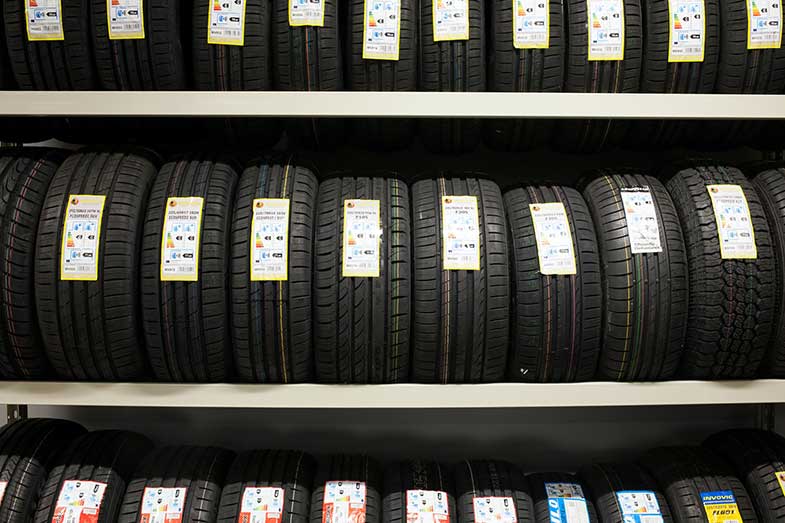
Credit: offroadingpro.com
How Do You Buy Tires at Walmart And Have Them Installed?
When you buy tires at Walmart, you have the option to have them installed by a professional. You can either schedule an appointment online or call your local store to set up a time. Once your tires are installed, be sure to check the air pressure and tread depth regularly.
How Much Does Walmart Charge to Put on Tires You Buy from Them?
If you’re looking to get new tires, Walmart is a great option. They offer a variety of tire brands and sizes at very competitive prices. But how much does Walmart charge to put on tires you buy from them?
The answer varies depending on the type of tire you purchase. For example, if you buy a basic all-season tire, Walmart will charge $15 per tire to install it. However, if you opt for a more premium tire, like a Michelin or Goodyear, the installation fee will be $25 per tire.
So, what’s included in this installation fee? At Walmart, they’ll mount and balance your new tires as well as dispose of your old ones. They’ll also perform a visual alignment check and inflate your tires to the proper pressure levels.
Basically, everything that’s needed to get your new tires ready to hit the road!Of course, these are just general guidelines – always be sure to ask about specific pricing and details when getting your new tires installed at Walmart.
Are Tires Bought at Walmart Good?
If you’re looking for cheap tires, Walmart is a great place to start your search. However, you may not be getting the best quality tires for your money. In general, Walmart’s tire selection is good for budget-minded shoppers who are looking for basic passenger car tires.
But if you need something specific or higher-quality, you’ll probably want to look elsewhere.Here’s a closer look at what Walmart has to offer in terms of tires:Passenger car tires: Walmart offers a wide selection of passenger car tires from brands like Goodyear, Michelin, and General Tire.
You can find all-season tires, winter tires, and even performance tires at Walmart. Prices start around $50 per tire but can go up to $200 or more for premium options.Truck and SUV tires: If you need new truck or SUV tires, Walmart has plenty of options from brands like Firestone and BFGoodrich.
All-terrain and mud-terrain tires are also available. Prices start around $100 per tire but can get as high as $300 or more for top-of-the-line models.Specialty tires: If you need specialty tires like those used on RVs or ATVs, Walmart has a few choices from brands like Carlisle and Kenda.
Where Can I Get the Best Deal on Tires?
There’s no definitive answer to this question since tire prices can vary depending on a number of factors, including the type of tire you need, the size of your vehicle, and even your location. However, there are a few ways you can save money on tires.One option is to buy used tires.
You can find used tires at many auto salvage yards or online through sites like Craigslist or eBay. Just be sure to inspect the tires carefully before you buy them to make sure they’re in good condition and will last for a while.Another way to save money on tires is to buy them in sets of four.
Many tire retailers offer discounts when you purchase four tires at once, so this is a great way to get a lower price per tire. Plus, it’ll be easier to keep your vehicle properly aligned if all four tires are the same size and brand.Finally, consider shopping around for the best deal on tires.
Compare prices at different retailers both online and offline, and look for any sales or specials that could help you save even more money. With a little patience and effort, you should be able to find some great deals on tires!
Conclusion
Are you in need of new tires but dread the process and cost of purchasing them? You’re not alone! Tires are an essential part of your vehicle but can be expensive.
However, by following a few simple tips, you can get quality tires at Walmart without spending a fortune.First, it’s important to know what kind of tires you need. If you’re not sure, consult your car’s owner manual or ask a professional at Walmart.
Once you’ve determined the size and type of tire, you can narrow down your search and compare prices.Next, take advantage of promotions and discounts. Many times, retailers will offer specials on certain brands or types of tires.
If you wait for these sales, you can save a significant amount of money. Additionally, don’t forget to check for manufacturer rebates which can further reduce the cost.Finally, consider purchasing used tires.
While this may not be ideal for everyone, it’s definitely worth considering if you’re on a tight budget. Used tires have been inspected for safety and typically come with a warranty, so they can be a great option if price is your main concern.By following these tips, you can purchase quality tires at Walmart without breaking the bank!
How to Add Weight to Rc Rock Crawler Tires? Quick Guide
If your tires are too light for the terrain you’re trying to conquer, there are a few things you can do to add weight. This is especially important for rock crawlers, as they need all the traction they can get. Here are a few ways to add weight to your RC rock crawler tires:
One way to add weight is by filling them with liquid silicone. You’ll need to drill a small hole in the tire, insert a needle, and slowly inject the silicone. Once it’s full, seal up the hole and let the tire sit overnight so the silicone can set.
This method is effective, but keep in mind that it will make your tires less flexible and more prone to punctures. Another option is to simply glue weights to the outside of the tire. This is an easy way to add weight without changing the tire’s structure or compromising its flexibility.
You can use lead fishing weights, BBs, or even pennies – whatever you have on hand that’s heavy enough. Just be sure that whatever you use is securely glued on, so it doesn’t fall off mid-crawl!
- Purchase the desired tires for your RC rock crawler
- Fill a bucket with water and place the tires in the bucket overnight
- This will add weight to the tires and help them grip better on surfaces
- In the morning, remove the tires from the bucket and allow them to air dry before using them on your rock crawler
How Do I Add Weight To My Rc Crawler Wheels? Lower Center of Gravity. Redcat Gen 8 / TRX4 / SCX10
Diy Rc Crawler Wheel Weights
Looking to add a little extra weight to your RC crawler wheels? Here’s a quick and easy DIY solution that will do the trick! What you’ll need:
RC crawler wheels (of course!)
Some type of lead or steel shot (you can find this at most hardware stores)
Super glue or epoxy
A drill with a small bit (around 1/8″ should do the trick)
Brass Weights Rc Crawler
If you’re a fan of RC crawlers, then you know that brass weights are essential for getting the perfect crawl. But what exactly are brass weights, and how do they help your crawler perform? Here’s everything you need to know about brass weights for RC crawlers.
Brass weights are small metal weights that attach to the body of your RC crawler. They help add weight to the vehicle, which is important for several reasons. First, extra weight helps the tires grip the ground better, giving you more traction and control.
Second, it increases the stability of your crawler, making it less likely to tip over uneven terrain. And finally, heavier vehicles tend to crawl slower than lighter ones, so if you’re looking for a more realistic crawling experience, adding some brass weights can help. There are a few things to keep in mind when choosing brass weights for your RC crawler.
First, make sure the weights are compatible with your particular model of crawler – not all brands and models will work with every type of weight. Second, consider how much weight you want to add – too much can make your crawler difficult to control, while too little may not provide enough traction or stability benefits. Finally, think about where you’ll be using your crawler – if you are crawling over rocks and other obstacles frequently, then heavier weights may be beneficial; but if you mostly stick to smooth surfaces like concrete or asphalt, lighter weights might be just fine.
Once you’ve selected the right brass weights for your needs, attaching them is usually a simple process. Most sets come with adhesive-backed stickers that make it easy to affix the weights directly to your Crawler’s body. Just peel off the backing paper, apply pressure, and voila!
Your new Brass Weights Rc Crawlers should be good to go.
Rc Crawler Axle Weights
Crawler axle weights are one of the most important aspects of your RC crawler. They provide traction and stability to your crawler and can make the difference between a successful run and a wreck. There are four main types of crawler axle weights: stock, light, medium, and heavy.
Each has its own advantages and disadvantages, so it’s important to choose the right weight for your particular crawling needs. Stock axle weights are typically the heaviest and provide the most stability and traction. However, they can also be the slowest and most difficult to maneuver.
Light axle weights are much lighter than stock weights, making them easier to maneuver. However, they don’t provide as much stability or traction as heavier weights. Medium axle weights fall somewhere in between light and heavy weights.
They offer good maneuverability while still providing decent stability and traction. Heavyweights are the heaviest type of crawler axle weight, offering the best stability and traction but at the expense of speed and maneuverability.
Trx4 Wheel Weights
TRX4 Wheel Weights If you’re looking to add some weight to your TRX4 for better traction and stability, wheel weights are a great option. Here’s everything you need to know about them.
What are they? Wheel weights are small metal weights that attach to your vehicle’s wheels. They help add traction and improve stability, especially on slippery surfaces like mud or sand.
They also help keep your vehicle from becoming bogged down in deep snow. How do I choose the right ones? There are a few things to consider when choosing wheel weights for your TRX4:
The size of your wheels: Make sure the weights you choose are compatible with the size of your wheels. If they’re too big or too small, they won’t work properly.
The type of terrain you’ll be driving on: Heavier weights are best for off-road use, while lighter weights may be sufficient for pavement or light dirt roads.
Your budget: Wheel weights can range in price from around $30-$100 per set, so be sure to shop around and find the best deal.
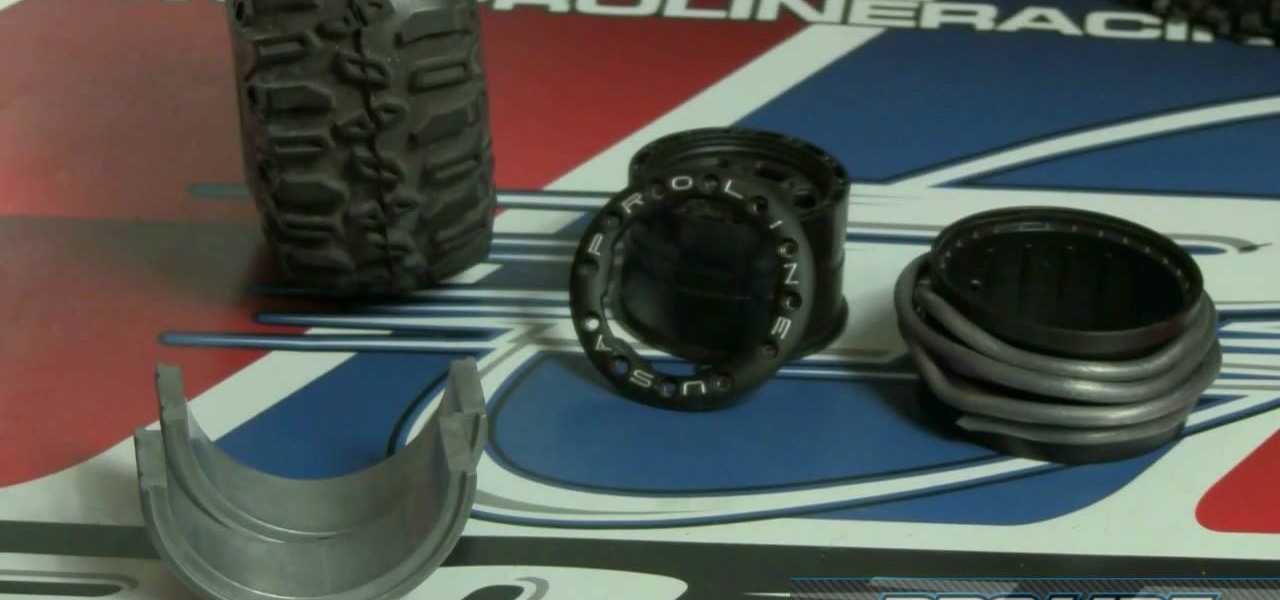
Credit: rc-vehicles.wonderhowto.com
How Can I Add Weight to My Remote Control Car?
If you’re looking to add weight to your remote control car, there are a few different methods you can try. One way is to simply add lead weights to the body of the car. This will increase the overall weight of the car, making it slower and harder to control.
Another way to add weight is to fill the tires with a heavier substance like sand or gravel. This will make the car more difficult to turn but will also add traction and stability. Whichever method you choose, be sure to test drive your car after adding the extra weight to get a feel for how it handles.
How Can I Make My Rc Crawler Grip Better?
One of the main ways to make your RC crawler grip better is by ensuring that the tires are properly inflated. You can also try adding weight to the front or rear of the crawler to help with traction. Another option is to add a set of shocks that are softer in the front and firmer in the rear, which will help keep the tires on the ground.
Finally, you can also add some sort of texturing to the tires themselves, such as spikes or studs, which will help them grip onto surfaces better.
Conclusion
Adding weight to your tires is a great way to improve traction and performance, especially when rock crawling. Here are a few tips on how to add weight to your RC rock crawler tires:
Use lead weights or shots. You can purchase these at most fishing or hunting stores. Simply glue them onto the outside of the tire.
Use steel washers. These can be found at any hardware store and are easy to attach with zip ties or wire.
Seal the inside of the tire with silicone caulk. This will add some weight and also help to seal in air pressure.
How to Balance Tires Yourself: Learn the Tricks of the Trade
Are you tired of spending money on getting your tires balanced at a mechanic or tire shop? Did you know that you can balance your tires yourself at home? Balancing your tires is essential to ensure a smooth ride and prolong the life of your tires.
Tire balancing is a process of equalizing the weight distribution of a tire and wheel assembly to ensure proper rotation and reduce vibrations. It’s a crucial maintenance task that should be performed regularly, especially after installing new tires or wheels.
Balancing your tires yourself may seem daunting, but it’s a simple process that can save you time and money. In this article, we will guide you through the step-by-step process of balancing your tires at home, with minimal tools and equipment. So let’s get started and learn how to balance your tires like a pro.
How to Balance Your Car’s Tires – Balance Them Like a Pro
Can You Balance a Tire at Home?
Most people believe that they need to take their car to a professional in order to get the tires balanced. However, this is not true! You can balance your own tires at home with just a few simple tools.
The first thing you need is a tire pressure gauge. This will help you determine how much air is in each tire. Next, you need a weight scale.
This will be used to weigh the tires so that you can find the center of gravity for each one. Finally, you need some tape and a marker. Now that you have all of your supplies, it’s time to start balancing your tires!
Start by finding the spot on each tire where the tread meets the sidewall. This is called the “tread wear indicator.” Place your weight scale on the ground next to the tire and rest the tire on top of it so that the tread wear indicator is in the center of the scale.
Use your tape measure to find out how far away from the center the tread wear indicator is on each side of the tire. For example, if it’s 3 inches to the left on one side and 2 inches to the right on another side, then that means that there is 1 inch more weight on one side than there is on another side. To balance this out, put 1 inch worth of weights onto the lighter side until both sides have equal amounts of weight.
Once you’ve done this for all four tires, congratulations! You’ve now balanced your own tires at home without having to pay someone else to do it for you!
What is the Most Accurate Way to Balance a Tire?
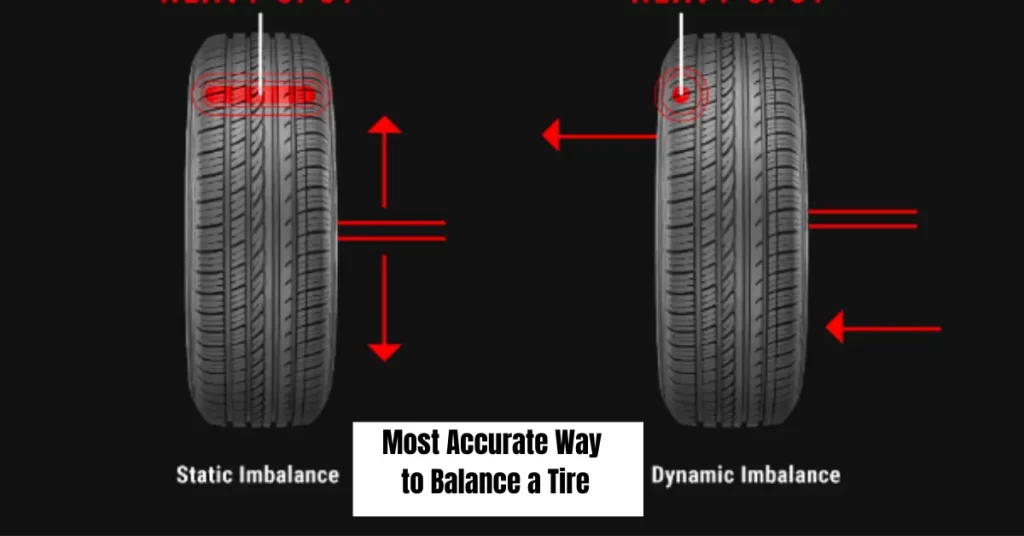
When it comes to balancing a tire, there are a few different schools of thought. Some people believe that the most accurate way is to use a digital or electronic balancer. Others swear by the old-fashioned method of using weights.
And still, others believe that the best way is to actually physically spin the tire until it’s balanced. So, which method is the most accurate? Well, that depends on who you ask.
If you ask someone who uses a digital or electronic balancer, they’ll likely tell you that their method is the most accurate. And if you ask someone who uses weights, they’ll say the same thing. The truth is, all three methods can produce fairly accurate results.
It really just depends on your own preference and what works best for you.
Can You Balance a Tire Without Weights?
It is possible to balance a tire without weights, but it is not recommended. Without weights, the tire will be balanced unevenly and could cause problems with the vehicle’s handling. Additionally, over time the unbalanced tire will wear down more quickly than a balanced one, resulting in shortened tire life.
Can You Mount And Balance Tires Yourself?
No, you cannot mount and balance tires yourself. You need special equipment to do this, and it’s best left to the professionals.
How to Balance Tires at Home Without Equipment
It’s no secret that maintaining proper tire pressure is crucial to prolonging the life of your tires. But did you know that you can actually save money by balancing your own tires at home? That’s right – with a little patience and the right tools, you can achieve professional-level results without spending a fortune on equipment or services. Here’s how:
First, inflate all of your tires to the manufacturer-recommended pressure levels. Next, using a chalk line or string, mark a line around the circumference of each tire.
Now it’s time to get started! For each tire, place one end of a 2×4 board underneath the center portion of the tire. Slowly and evenly lift up on the other end of the board until the entire weight of the tire is supported by the board.
Using your marked lines as a guide, slowly rotate the tire until you find its heaviest point (this will be different for each tire). Once you’ve found the heaviest point, make a small mark on both sides of the tread at that location. Remove the 2×4 and repeat this process for each remaining tire.
Now it’s time to add weight to those marked locations. The amount will vary depending on how far off-balance your tires were, to begin with, but start with 1/2-ounce increments and go from there. Attach lead weights (available at any auto parts store) to either side of each mark using strong adhesive tape or wire ties. Be sure not to over-correct – too much weight will throw off your balance again!
How to Mount And Balance Tires Yourself
If you’re reading this, then you probably already know the importance of having properly inflated and balanced tires on your vehicle. Not only does it make for a smoother ride, but it can also help improve fuel economy and prolong the life of your tires. Many people take their car to a mechanic or tire shop to have this done, but did you know that you can actually do it yourself?
It’s not as difficult as you might think, and in most cases, all you need is a few simple tools and an afternoon to get the job done. Here’s a step-by-step guide on how to mount and balance tires yourself:
Start by inflating all of your tires to the recommended pressure levels. You can find these numbers in your owner’s manual or on the placard located on the doorjamb of your driver’s side door.
Once they’re all inflated, use a tire iron to loosen each lug nut about half a turn. Do not remove them completely yet!
Now it’s time to jack up your car so you can work on the tires. Place the jack under the frame rail near where the tire is located, then crank it until the tire is slightly off of the ground. Be sure to place jack stands under the vehicle before continuing!
With the tire still supported by the jack, finish removing the lug nuts and set them aside somewhere safe (you don’t want to lose them!). Now carefully pull off the old tire from its wheel rim. Inspect both sides of it for any nails or other objects that may have become lodged in there; if you find anything, use a pair of pliers or needle-nose pliers to remove it before proceeding further.
How to Tell Which Tire is Out of Balance
If you’re like most people, you probably don’t think much about your car’s tires until there’s a problem. But keeping your tires in good condition is important for both your safety and the longevity of your vehicle. One way to keep your tires in good shape is to make sure they’re properly balanced.
If you’re not sure what tire balancing is or how to tell if your tires are out of balance, don’t worry. We’re here to help. Keep reading to learn everything you need to know about tire balancing and how to tell if yours are out of balance.
What is Tire Balancing? Tire balancing is the process of making sure that the weight of each tire and wheel assembly is distributed evenly around the axle. This ensures that each tire spins at the same speed, which helps improve the ride quality and prevents premature tread wear. How Do I Know if My Tires Are Out of Balance?
Frequently Ask & Questions
Are you tired of paying expensive fees to have your tires balanced at a mechanic or tire shop? Balancing your own tires may seem like a daunting task, but with the right tools and knowledge, it can be done easily and at a fraction of the cost.
In this FAQ, we will guide you through the steps of balancing your own tires, including the tools you will need, the process to follow, and some tips and tricks to make the job easier. So, let’s get started and learn how to balance your tires yourself!
What is the best way to balance tires?
The best way to balance tires is to use a computerized wheel balancer. This machine can accurately measure the weight distribution of the tire and wheel assembly and determine where to add or remove weights to achieve balanced rotation. The technician will place the tire and wheel on the balancer, spin it at high speeds, and then attach weights to the rim to counterbalance any weight imbalances. This ensures a smooth and safe ride for the vehicle.
What are some common mistakes people make when balancing tires?
Some tips for balancing tires safely include using a reliable tire balancer, ensuring the wheel is properly cleaned and free of debris, mounting the tire correctly, and ensuring that the weight is evenly distributed around the wheel. Additionally, it’s important to regularly check tire balance and make adjustments as needed to prevent uneven wear and potential safety hazards while driving.
What are some tips for balancing tires safely?
Some tips for balancing tires safely include using a quality tire balancer, making sure the wheel is clean and free of debris, properly mounting the tire on the balancer, and using the correct weight to balance the tire. Additionally, it is important to be aware of any safety precautions recommended by the manufacturer and to follow them carefully to ensure a safe and effective balancing process.
Conclusion
Balancing tires is an important aspect of vehicle maintenance that ensures a smooth and safe driving experience. While professional assistance is recommended for precise balancing, you can still perform basic tire balancing yourself with the right tools and knowledge.
By following the steps outlined in this guide, including identifying tire imbalance, removing weights, and adding or adjusting weights, you can improve tire performance and extend its lifespan. Remember to regularly check tire balance, especially after rotating or replacing tires, to maintain optimal handling, reduce vibration, and enhance overall road safety.
However, if you are uncertain or encounter persistent issues, it’s best to consult a professional tire technician for a thorough inspection and precise balancing.
How to Black Out White Letters on Tires? Stylish Tires Today!
Are you tired of your white-lettered tires ruining the sleek look of your car? Do you want to give your tires a more aggressive and uniform appearance? The solution is simple: blacking out the white letters.
White lettering on tires was popular in the 1970s and 80s, but the trend has lost its appeal to many car enthusiasts. The contrast between the white letters and the black tire can be jarring and can distract from the overall look of the vehicle. Blacking out the white letters is an easy and inexpensive way to give your car a more modern and cohesive look.
If you’re looking to black out the white letters on your tires, there are a few methods to consider. In this article, we’ll explore the different techniques and materials you can use to achieve the desired result. Whether you’re a car enthusiast or just looking to give your ride a fresh look, this guide will help you achieve the perfect blacked-out tire.
Can You Blackout White Letter Tires?
When it comes to blacking out white letter tires, there are a few things that you need to take into account. The first is the type of paint that you use. You want to make sure that you use paint that is specifically designed for use on tires.
This will ensure that the paint adheres properly and doesn’t peel off easily. The next thing to consider is how you apply the paint. You want to avoid getting any on the sidewalls of the tire, as this can cause problems down the road.
The best way to apply the paint is with a brush or roller specifically designed for use on tires. This will help you get an even coat and avoid any streaks or brush marks. Finally, you need to be mindful of the curing process.
Most tire paints need to cure for 24 hours before they are fully dry and ready to be driven on. During this time, it’s important not to expose the tires to any extreme temperatures or weather conditions (i.e., don’t leave them out in direct sunlight or in freezing temperatures). Once the 24 hours have passed, your blacked-out white letter tires should be good to go!
How Do You Get White Letters off Tyres?
Assuming you would like tips on how to clean white lettering off your tyres: One way you can remove white lettering from your tyres is by using a product called Goo Gone. This is a gel that is specifically designed to break down and remove adhesive residue.
You can find this product at most hardware stores. To use, firstly make sure the area you will be working in is well-ventilated as Goo Gone has strong fumes. Next, apply a generous amount of the gel to the tyre and let it sit for a few minutes so it can start breaking down the adhesive.
Once it has had time to work, use a putty knife or old toothbrush to scrub at the letters until they start to come off. You may need to reapply more Goo Gone and let it sit for longer if the letters are proving difficult to remove. Finally, once all the letters are off, wash the tyre with soapy water and dry it off.
How Do You Paint Car Tire Letters?
Car tire lettering is a great way to add some personalization to your ride. There are a few different ways that you can go about painting your car tire letters, and the method you choose will likely depend on the look you’re going for and the amount of time you’re willing to spend. One of the quickest and easiest ways to paint car tire letters is to simply use a permanent marker.
This method is great if you want something that’s quick and easy, but it’s not going to give you the most professional or durable results. If you go this route, be sure to use a thick-tipped marker so that the lines are thick and easy to see. You’ll also want to make sure that the surface of your tires is clean and free of any dirt or debris before you start writing.
If you’re looking for something a little more permanent, then painting your car tire letters is probably the way to go. You’ll need some basic supplies like painter’s tape, masking paper, primer, paint, and clear coat sealer. Start by taping off the area around each letter so that only the letter itself is exposed.
Next, apply a layer of primer followed by two coats of paint. Once everything is dry, carefully remove the tape and paper masks and apply a layer of clear coat sealer over top. This will help protect your new paint job from chipping or fading over time.
No matter which method you choose, painting car tire letters is a fun way to show off your personality while adding some visual interest to your ride. Just be sure to take your time and follow all directions carefully for the best results!
What Takes Blue off White Letter Tires?
If you have blue lettering on your tires and want to remove it, there are a few things you can try. One is to use rubbing alcohol or nail polish remover. Another is to use a magic eraser or similar product. You might also be able to scrape it off with a razor blade.
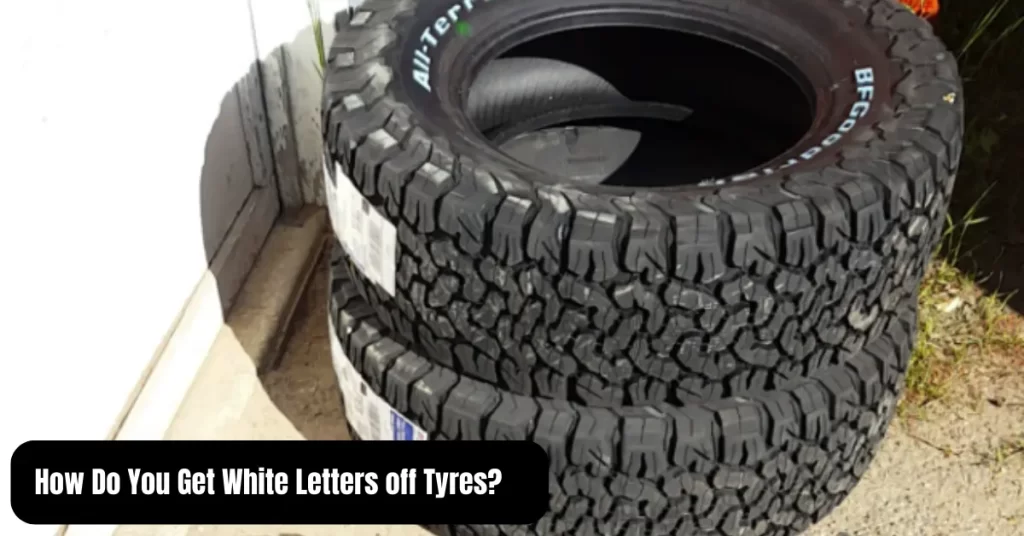
White Lettering Or Black Lettering on Tires
If you’re like most people, you probably don’t think about the lettering on your tires very often. But did you know that there are actually two different types of lettering used on tires? White lettering and black lettering each have their own distinct advantages and disadvantages.
White lettering
Advantages:
- White lettering is easier to see, making it ideal for low-light conditions or for people with poor vision.
- White lettering can make a tire look newer and more stylish.
- Some people believe that white lettering provides better traction than black lettering in snowy or icy conditions.
Disadvantages:
- White lettering is more susceptible to dirt and grime, so it may need to be cleaned more frequently than black lettering.
- Because white lettering is more visible, any imperfections on the tire’s surface will be more noticeable as well.
Black Lettering:
Advantages:
- Black lettering doesn’t show dirt and grime as easily as white lettering, so it requires less frequent cleaning
- Blackletter ing can make a tire look more aggressive and sporty.
- Some people believe that blackletter ing provides better traction than white-letter ing in dry conditions.
How to Remove White Lettering on Tires
Removing white lettering from tires is a process that can be done at home with some simple supplies. The most important thing to remember when removing white lettering is to work slowly and carefully to avoid damaging the tire. Here are the steps to remove white lettering from your tires:
Begin by inflating the tire so that the surface is tight. This will make it easier to remove the lettering without damaging the tire.
Use a razor blade or utility knife to score along the edge of the lettering. Be careful not to press too hard so that you don’t cut into the tire. It may help to use a straightedge as a guide for your blade.
Once you’ve scored all around the letters, use your hands or a small tool to pry them off of the tire surface. Start at one corner and work slowly until all of the letters are removed.
How to Remove Permanent Tire Lettering
Are you looking to remove permanent tire lettering? If so, there are a few things you need to know. First, tire lettering is made from a special vinyl material that is designed to withstand the elements and last for many years.
However, over time this material can degrade and become brittle, making it difficult to remove. Additionally, the adhesive used to attach the letters can also become weaker over time, making removal even more challenging. If you’re determined to remove the lettering from your tires, there are a few methods you can try.
One popular method is using heat to soften the vinyl and adhesive. This can be done with a hair dryer or heat gun. Start by heating up one section of the lettering for 30-60 seconds.
Then use a putty knife or razor blade to slowly peel back the softened vinyl. Be careful not to apply too much heat at once as this could damage the tire itself. Another method you can try is using WD-40 or another lubricant spray.
Simply spray liberally over the letters and let them soak in for several minutes. Then use a putty knife or razor blade to scrape off the loosened letters. You may need to repeat this process several times before all of the letters are removed.
Whichever method you choose, the removal of permanent tire lettering can be a time-consuming and tedious process. But with patience and persistence, you’ll eventually get those pesky letters off your tires!
Change the Lettering to Black Tire Lettering in less than 15 minutes per tire.
Frequently Ask & Questions
If you’re looking to give your car or truck a unique and edgy look, blacking out the white letters on your tires is a great way to achieve that. Not only does it give your vehicle a cool and customized appearance, but it also helps protect the white lettering from fading or yellowing over time.
However, if you’re new to this process, you may have some questions about how to black out white letters on tires. In this FAQ section, we’ll answer some of the most common questions to help you achieve the look you want.
How do I black out white letters on my tires?
Blacking out white letters on your tires is a relatively simple process. The first step is to clean the tires thoroughly with soap and water, then rinse them off with a garden hose. This will remove any dirt or debris that could interfere with the blacking-out process.
Next, you’ll need to sand down the white letters using an abrasive material such as sandpaper or steel wool. This will help create a smooth surface for applying paint. Once you’ve finished sanding, make sure to wipe away any dust created by the process.
Finally, apply several coats of tire paint or spray paint that matches the color of your tires to the white lettering until it is completely covered. Allow each coat to dry before adding another one, and make sure to let the entire area dry for at least 24 hours before driving on it again.
What are the best ways to black out white letters on tires?
One of the best ways to black out white letters on tires is to use tire paint or marker. Tire paint is specifically designed for this purpose and will give you the most durable results. It’s important to make sure that the tire is clean and dry before applying the paint, as dirt or moisture can cause it to bubble or peel off.
Another option is to use a permanent marker, such as a Sharpie. This method may not be as durable as tire paint, but it can be a good choice if you need a quick solution. Make sure that you go over each letter several times for the best coverage.
Finally, if you want to add some extra protection against wear and tear, you can apply a clear coat of automotive wax over the blacked-out letters. This will help keep them looking fresh for longer.
What are the risks of not blacking out white letters on tires?
Not blacking out white letters on tires can present a number of risks. Firstly, the tire’s sidewall is made of rubber that has been designed to flex and absorb shock. When the white lettering is exposed, it can be more susceptible to cracking or peeling due to the additional exposure to heat and sunlight.
Additionally, when the white lettering is exposed it can make it difficult for drivers to read the tire’s specifications such as load rating or speed rating. This can lead to an unsafe situation if a driver unknowingly puts too much weight on a tire with a lower load rating or drives too fast for a tire with a lower speed rating.
Finally, not blacking out white letters on tires may be illegal in certain states or municipalities, so it’s important to check local laws before leaving them exposed.
Conclusion
If you want to black out the white letters on your tires, there are a few things you can do. You can either use a tire paint or a black Sharpie. If you use tire paint, make sure to apply several thin coats so that it doesn’t peel off. If you’re using a Sharpie, be careful not to get any on your car’s paint. Once you’ve blacked out the letters, enjoy your new look!
How to Bead Stretched Tires – Transform Your Tread
Have you ever seen a car with stretched tires and wondered how it’s done? It’s a popular trend in the car scene, but it’s not just for looks. Beading stretched tires can actually improve the handling and performance of your vehicle.
Stretched tires have grown in popularity over recent years, with car enthusiasts looking for ways to make their rides stand out. However, it’s not just a matter of slapping on some tires and calling it a day. Beading stretched tires takes a certain level of skill and knowledge to ensure that it’s done correctly and safely.
If you’re interested in beading stretched tires on your car, there are a few things you need to know before getting started. From the right tools to the proper techniques, we’ll guide you through the process step-by-step to help you achieve the perfect look and performance for your ride.
How Far Can You Stretch a Tire?
It’s important to know how far you can stretch a tire before needing to replace it. Depending on the severity, stretching a tire too much can cause irreparable damage or even a blowout. While there are ways to temporarily fix a stretched tire, it’s ultimately best to replace it as soon as possible.
How Much Can You Stretch a Tire? The amount that you can stretch a tire will depend on the type of tire and its condition. In general, however, most tires can be stretched up to 3/32 of an inch before they need to be replaced.
This may not seem like much, but when you consider that the average new tire is only about 10/32 of an inch thick, it’s actually quite a lot. Why Does Stretching a Tire Matter? When you drive on roads with potholes or other debris, your tires can take a beating.
Over time, this can cause them to become misshapen or even develop bulges and bald spots. Not only does this make your car less stable and more difficult to handle, but it also decreases your fuel efficiency and puts extra strain on your suspension system. In extreme cases, poorly maintained tires can even lead to blowouts while you’re driving which can be extremely dangerous (not to mention expensive).
How Do You Know if Your Tire Needs To Be Replaced? If you’re not sure whether or not your tire needs to be replaced, there are a few things you can look for:
Uneven tread wear: If one part of the tread is significantly more worn down than the rest, it’s time for a new tire.
Cracks in the sidewall: Even if the tread looks fine, cracks in the sidewall are an indication that the structural integrity of the tire has been compromised and needs to be replaced.
Bulges or blisters: If you notice any bulges or blisters on the surface of the tire, this means that air is leaking from inside and causing weakness in the structure of the tire itself.
How Do You Pump Stretch Tyres?
Assuming you are asking how to stretch car tyres: There are a few ways that people typically go about stretching tyres, and which method you use will depend on the tools and materials that you have available. One common way is to use a hydraulic jack to lift up the car so that the tyre is clear of the ground, then place a block of wood or similar under the tyre.
Once the tyre is supported, grab hold of it at 12 and 6 o’clock and push and pull alternately to stretch it out. Another way is to use a ratchet strap or similar hooked around the circumference of the tyre; again, jacking up the car so that the tyre is off the ground, take up any slack in the strap until it is tight, then drive forwards a short distance before reversing back into your starting position. This process can be repeated as necessary.
Whichever method you choose, be sure to check your work afterward by measuring the circumference of the stretched tyre with a tape measure it should be significantly larger than before!
Are Stretched Tires Legal?
Most people think that stretched tires are illegal because they don’t meet the minimum tread depth requirement. However, this is not always the case. Stretched tires can be legal if they are used for off-road purposes or if they have a deep tread depth.
Stretched tires can give your car a unique look and can improve your traction when driving on slick roads. They can also help you to corner better by increasing the contact patch of your tire with the ground. However, there are some drawbacks to using stretched tires.
One of the biggest concerns with stretched tires is safety. Because they have a smaller contact patch, they can slip and slide more easily on wet roads. This can lead to accidents or even rollovers.
Additionally, stretched tires put extra stress on your suspension and steering components, which can cause premature wear or failure. If you do decide to use stretched tires, make sure you know what you’re doing and that you understand the risks involved. Never exceed the recommended tire pressure for your vehicle, and always inspect your tires before each drive to ensure they are in good condition.
How Do You Get a Tight Tire on a Rim?
It can be difficult to get a tight tire on a rim, but there are a few things you can do to make it easier. First, make sure the rim is clean and free of any dirt or debris. Next, use a tire bead seating lubricant on the beads of the tire.
This will help the tire slide onto the rim more easily. Finally, use a tire mounting tool to help push the bead of the tire over the edge of the rim. With these tips, you should be able to get a tight fit on your tires!
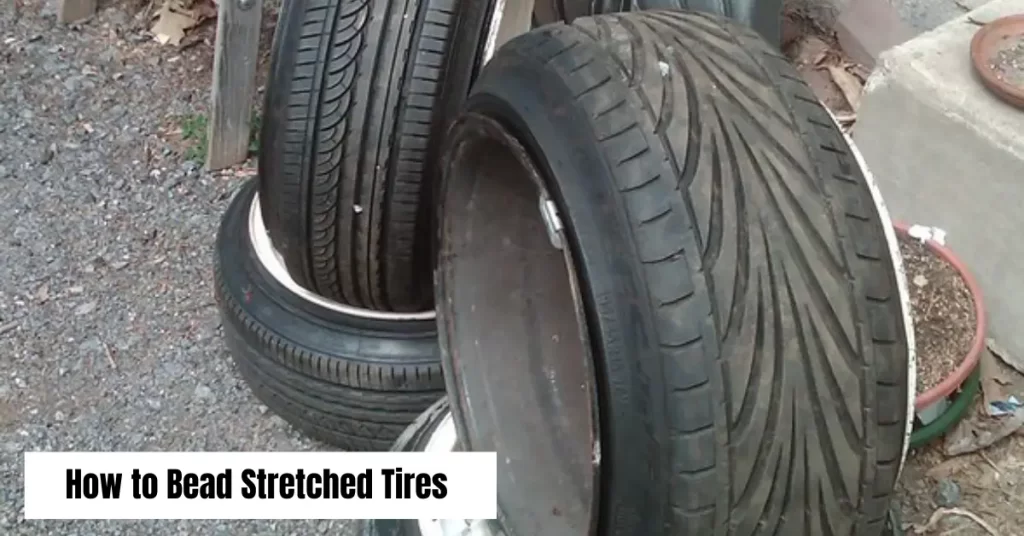
Tire Stretch Visualizer
Do you know how much your tires have stretched? It’s important to be aware of, because it can affect your vehicle’s handling. The Tire Stretch Visualizer is a tool that can help you see how much your tires have stretched.
All you need is a picture of your car (preferably with the wheels on) and the visualizer will do the rest. Simply upload the image and then click on each tire. The visualizer will show you how much the tire has stretched.
This is a valuable tool for anyone who wants to make sure their car is handled properly. Check it out today!
How to Stretch Tires Without Fire
If you’ve ever wondered how to stretch tires without fire, wonder no more! Here’s a step-by-step guide:
- Find a wide, flat surface on which to work.
- A driveway or parking lot is ideal. Park your car in the middle of the space and set the emergency brake.
- Loosen each of the lug nuts on your tires about half a turn. Do not remove them completely.
- Using a tire iron or other appropriate tool, jack up your car so that the tires are clear of the ground. Place jack stands under the frame of your car for added stability and safety.
- With one hand on either side of the tire, push outward with both hands until you feel resistance. Hold this stretch for 10 seconds before releasing and repeating on the other side of the tire. Repeat this process 5-10 times per tire.
Stretched Tires Guide
If your car’s tires are looking a little low, you may be wondering if they need to be replaced or if they can just be refilled. The answer depends on the type of tire. If you have a tubeless tire, it can simply be refilled with air. However, if you have a tube-type tire, you will need to replace the entire tire. Here is a guide to help you know when it is time to replace your tires:
Check the tread depth. You can do this by inserting a penny into the tread groove. If the top of Lincoln’s head is visible, then the tread depth is less than 2/32 inch and it is time to replace the tire.
Look for cracks or splits in the sidewall of the tire. These indicate that the structure of the tire has been compromised and it needs to be replaced.
Check for uneven wear patterns on the tires. This could indicate that the wheels are out of alignment or that there is something else wrong with the suspension system.
How to stretch a tire and how you don’t – Beaded Tires!
Frequently Ask & Questions
What is the best way to stretch tires?
The best way to stretch tires is not to stretch them at all. Tire stretching is generally not recommended by tire manufacturers and automotive experts due to safety concerns and potential negative effects on performance.
Stretching tires involves fitting a tire with a narrower width onto a wider wheel, which can compromise the tire’s structural integrity and affect handling characteristics. It is important to prioritize safety and choose tires that are properly sized for the wheel, as recommended by the tire manufacturer and automotive industry standards.
This ensures optimal performance, handling, and durability while reducing the risk of accidents or tire failures. It is always advisable to consult with professionals and follow their recommendations when it comes to tire fitment to ensure a safe and enjoyable driving experience.
What are the risks of not stretching tires?
The risks of not stretching tires primarily stem from improper fitment and mismatch between the tire and wheel size. If a tire is not stretched properly or is not the appropriate size for the wheel, several issues may arise.
Firstly, it can negatively impact the handling and stability of the vehicle, leading to decreased control and increased risk of accidents. Additionally, improper fitment can cause premature tire wear, uneven tire wear patterns, and compromised tire sidewall integrity.
This increases the likelihood of tire blowouts or failures, especially during high-speed maneuvers or abrupt braking. It is also worth noting that stretching tires may void tire warranties and insurance coverage. To ensure safety, it is advisable to follow tire manufacturer recommendations and use tires that are designed to properly fit the specified wheel size.
How often should I stretch my tires?
Tire stretching is not a recommended practice, and therefore, it is not necessary or advisable to stretch tires at any regular intervals. Tire stretching involves fitting a tire with a narrower width onto a wider wheel, which can compromise safety and performance.
Tire manufacturers do not endorse or support this practice, and it may void tire warranties. It is important to prioritize safety and choose tires that are properly sized for the wheel, as recommended by the tire manufacturer and automotive industry standards.
Regularly inspecting tires for wear, maintaining proper tire pressure, and replacing them when they are worn or damaged are more important factors for ensuring safe and reliable performance on the road.
Conclusion
If you’re looking to add some extra style to your vehicle, bead-stretched tires are a great way to do it. This tire stretching technique involves taking a regular tire and adding beads around the circumference of the tire. This gives the appearance of a much larger tire and can make your car look more aggressive.
The best part about this mod is that it’s relatively simple to do and doesn’t require any special tools or equipment. All you need is a few hours of time and patience. In this article, we’ll show you how to bead stretch tires step-by-step so that you can get the look you want.
How to Blacken Tires – Here’s How to Blacken Tires!
Are you tired of your tires looking dull and faded? Do you want to add some style and shine to your vehicle? Blackening your tires could be the solution you’re looking for.
[Background]Blackening tires has been a popular trend among car enthusiasts for many years. It not only enhances the appearance of the tires but also protects them from UV rays and other environmental factors. However, if done incorrectly, it could lead to damage to your tires and even your car.
If you want to blacken your tires, there are certain steps you need to follow to ensure that you do it correctly and safely. In this article, we will guide you through the process of blackening your tires, including the tools and materials you’ll need, and the step-by-step process to achieve the perfect blackened tire. So let’s get started!
What is Added to Tires to Make Them Black?
Tires are made of rubber, and the black color is added during the manufacturing process. Rubber is a natural polymer, and the black color is added by adding carbon black to the mix. Carbon black is a form of soot that is produced when incomplete combustion of hydrocarbons takes place. It is an extremely fine particulate that gives tires their characteristic black color.
How Do You Make Old Tires Look New Again?
If you have old tires that you want to make look new again, there are a few things you can do. First, clean the tires with soap and water. Then, use a tire shine product to make the tires look shiny and new. Finally, add a coat of wax to the tires to protect them from the elements and keep them looking new for longer.
Can You Use Wd40 As Tire Shine?
No, you should not use WD-40 for tire shine. While WD-40 can help to clean and protect your car’s tires, it is not designed for this purpose and can actually end up damaging your tires. Tire shine products are specifically designed to give your tires a long-lasting, glossy finish that will help to protect them from the elements.
If you use WD-40 on your tires, it may cause them to become sticky or attract dirt and grime, which can eventually lead to tire damage.
Why Do They Dye Tires Black?
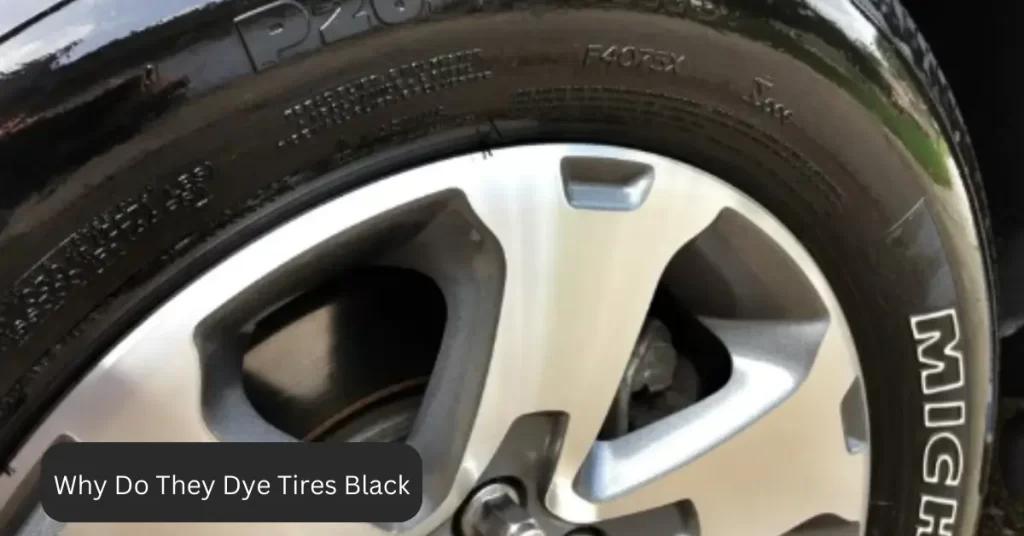
Tires are typically made of black rubber. The main reason they are dyed black is for aesthetic purposes. Black rubber looks more sleek and professional than other colors, and it also hides dirt and grime better than lighter colors would.
In some cases, manufacturers may also add carbon black to the tire compound in order to improve its strength and durability.
What is the Best Homemade Tire Shine
If you’re looking for a natural and affordable way to achieve shiny, new-looking tires, then look no further than your kitchen cupboard. All you need is some white vinegar, water and a spray bottle. Here’s how to make your own tire shine:
- In a bowl or jug, mix together 1 part white vinegar with 3 parts water.
- Pour the mixture into a clean spray bottle.
- Spray the solution onto your tires and leave for 5 minutes or so.
Wd40 Tire Shine
Looking to add a little extra shine to your tires? WD-40 has you covered with their Tire Shine product. This aerosol provides an easy way to clean and shine your tires, giving them a like-new look.
To use, simply spray the solution onto a clean cloth and then wipe down your tires. For best results, let the solution sit on the tire for a few minutes before wiping it off. You can also apply this product directly to your tires for even easier application.
WD-40 Tire Shine leaves behind a long lasting, high-gloss finish that will make your car stand out from the rest. It repels water and dirt, making it easier to keep your tires clean in between washes. So if you’re looking for an easy way to get shiny, like-new-looking tires, grab yourself a can of WD-40 Tire Shine!
Best Tire Black
If you are looking for the best tire black, look no further than the Black Magic Tire Shine. This product will give your tires a long lasting, deep black shine that will make them look like new. The Black Magic Tire Shine is easy to use and can be applied in just minutes. It is also durable and will not wash off in the rain or snow.
DIY Tire Black Home Made Tire Black Is So Expensive – A Pro’s Guide!
Frequently Ask & Questions
What is the best way to blacken tires?
Blackening tires is a great way to give your vehicle a unique look. There are several ways to blacken tires, depending on the desired outcome. The most common method of blackening tires is to use a tire shine product. These products come in both spray and liquid form and can be applied directly onto the tire with a cloth or sponge.
The product will darken the tire and also provide a layer of protection against UV rays and dirt. Make sure to follow the manufacturer’s instructions when applying the product, as some may require multiple coats for optimal results.
Another option is to use tire paint. This is an easy way to get a professional-looking finish on your tires. Tire paint comes in various colors, so you can choose one that matches your vehicle’s color scheme or go for something bolder if you want a more dramatic look.
What are the benefits of blackening tires?
Blackening tire is a process of applying a protective coating to the rubber of the tire. This coating helps protect the tire from damage caused by UV rays, road debris, and other environmental hazards.
The primary benefit of blackening tires is that it helps extend the life of your tires. The coating acts as a shield against UV rays and other environmental hazards, which can cause cracking and other damage to the rubber over time. Additionally, the blackened tire surface also provides better traction on wet roads, helping you stay safe while driving in inclement weather.
Blackening tires also give your vehicle a more aesthetically pleasing look. The blackened surface adds a sleek shine to your wheels and makes them stand out from the rest of your car or truck. It’s an easy way to customize your vehicle without having to invest in costly modifications.
What are the risks of blackening tires?
Blackening tire is a process of applying a black tire dressing to the sidewalls of tires. While this can give vehicles a sleek, stylish look, it comes with certain risks.
The first risk is that the tire dressing may contain harmful chemicals that could be hazardous to your health.
Tire dressings are made from petroleum-based chemicals and solvents, which can cause skin irritation or respiratory issues if inhaled. Additionally, these chemicals can seep into the ground and contaminate soil and water sources if not disposed of properly.
Another risk associated with blackening tires is that it can reduce the life of the tire. The tire dressing can clog up small grooves and crevices in the treads, reducing traction and potentially leading to premature wear on the tire. This could lead to decreased fuel efficiency and increased wear on other vehicle components such as brakes or suspension components.
What are some tips for safe and successful blackening tires?
Blackening tires is a popular way to give an old tire a new look. Here are some tips for safe and successful blackening:
Make sure the tire is clean before applying the blackener. Use a brush or cloth to remove any dirt, dust, or debris from the surface of the tire.
Use a quality blackening product specifically designed for tires. Read the instructions carefully and follow them closely to ensure you get good results.
Apply the blackener evenly and in thin layers for best results. Allow plenty of drying time between each layer so that it adheres properly to the tire’s surface.
Conclusion
If your car’s tires are looking a little lackluster, you can blacken them with some simple household items. All you need is a can of flat black spray paint and some clear acrylic sealer. First, clean the tires with soapy water and let them dry completely.
Next, mask off any areas that you don’t want to get paint on using painter’s tape. Then, simply spray the tires with several light coats of paint, letting each coat dry for at least an hour before applying the next one. Once the paint is dry, apply a coat of clear sealer to protect it from the elements.
How to Buy Tires Direct from Manufacturer
If you want to buy tires direct from the manufacturer, there are a few things you need to know. First, you need to find out if the manufacturer offers a direct purchase option. Many manufacturers sell their tires through retailers, so you’ll need to check with the company to see if they offer this option.
Second, you’ll need to research the different types of tires available from the manufacturer. Once you’ve done your research and know what type of tire you want, you can contact the manufacturer directly to place your order.
10 Tips to Start Your Tires Warehouse Business | TIre Wholesale Warehouse
- Research the different types of tires that are available from the manufacturer
- Determine what size and type of tire is best for your vehicle
- Select the specific tires that you want to purchase from the manufacturer’s website
- Add the tires to your shopping cart on the manufacturer’s website and proceed to checkout
- Enter your shipping information and choose a shipping method at checkout
- Choose a payment method and enter your payment information at checkout
- Review your order summary and submit your order for processing
Tires Factory Direct
Tires are a vital part of any vehicle, and it’s important to choose the right ones for your needs. Tires Factory Direct is a great resource for finding the perfect tires for your car, truck, or SUV. With a wide selection of tires from top brands like Michelin, Goodyear, and Pirelli, you’re sure to find the perfect set for your vehicle.
And with factory direct pricing, you can save big on your next tire purchase.
Direct Tire
If you’re in the market for new tires, you may be wondering if direct tire purchasing is the way to go. Direct tire buying can be a great option for many people because it offers a few key benefits.First, when you buy tires directly from a manufacturer or retailer, you can be sure that you’re getting high-quality products.
Tires sold through other channels may not be held to the same standards, so they may not perform as well or last as long.Second, buying tires directly often means getting them at a lower price than you would pay through another retailer. This is because manufacturers and retailers want to encourage direct sales and may offer discounts to customers who purchase tires this way.
Finally, buying tires directly gives you more control over the process. You can choose exactly which tires you want and have them shipped directly to your door (or to a local installer). This saves time and hassle compared to having to find a retailer that stocks the specific tires you need.
Overall, direct tire buying can be a great option for many people. If you’re looking for high-quality products at a good price, with convenience and control thrown in, it’s worth considering this option for your next tire purchase!
Tires Direct Wholesale
When it comes to finding the best deals on tires, there’s no better place to look than Tires Direct Wholesale. We are one of the largest tire wholesalers in the country, and we’re able to offer our customers unbeatable prices on all major brands of tires. Whether you’re looking for new tires for your car or truck, or you need a set of replacement tires, we have what you need at prices that will fit your budget.
We carry all major brands of tires, including Goodyear, Michelin, BFGoodrich, and more. And because we buy in bulk direct from the manufacturers, we’re able to pass along those savings to our customers. We also offer free shipping on all orders over $50, so there’s no reason not to take advantage of our great deals!
If you’re not sure which tires are right for your vehicle, our experts are always happy to help. Just give us a call or send us an email and we’ll be happy to assist you in choosing the perfect tire for your needs. So don’t wait any longer – head over to Tires Direct Wholesale today and save big on the best selection of tires around!
Tire Rack
If you’re in the market for new tires, you’ve probably heard of Tire Rack. They’re one of the most popular online tire retailers, and for good reason. Here’s everything you need to know about Tire Rack before you make your purchase.
Tire Rack was founded in 1979 by Peter Caldwell. The company started as a small mail-order business selling tires out of his garage. Today, Tire Rack is a leading online retailer of tires and wheels, with over 2 million customers nationwide.
One of the things that sets Tire Rack apart from other retailers is their focus on customer service. They have a team of experts who are available to answer any questions you might have about choosing the right tires for your car. And if you’re not sure what size or type of tire you need, they have a handy tool on their website that will help you figure it out.
Tire Rack also offers free shipping on all orders over $50 (excluding Alaska and Hawaii). And if you need your tires sooner than the estimated ship date, they offer expedited shipping at an additional cost.When it comes time to install your new tires, Tire Rack can help with that too.
They have a network of over 9,000 certified installers across the country who can get your new tires installed quickly and safely. Plus, they offer a low price match guarantee, so if you find a lower price elsewhere within 30 days of purchase, they’ll refund the difference.So whether you’re looking for new tires or just some advice on which ones to choose, Tire Rack is definitely worth checking out.
Wholesale Tires
If you’re in the market for new tires, you may be wondering if it’s worth it to buy them wholesale. The short answer is yes! There are many benefits to buying tires wholesale, including lower prices, more selection, and easier returns.
When you buy tires wholesale, you’re typically able to get them for a lower price than if you were to buy them retail. This is because wholesalers have access to bulk discounts that they can pass on to their customers. In addition, most wholesalers don’t charge extra for shipping or handling, so you can save even more money by buying your tires from a wholesaler.
Another benefit of buying tires wholesale is that you have a much wider selection of brands and styles to choose from. When you shop at a tire retailer, they usually only carry a few brands and styles of tires. However, when you shop at a wholesaler, you can find just about any brand or style of tire that you need.
This makes it easy to find the perfect set of tires for your car without having to settle for something that’s not quite right.Finally, another advantage of buying your tires from a wholesaler is that they often offer better return policies than tire retailers do. If you buy your tires from a retailer and then find out that they don’t fit properly or there’s something wrong with them, returning them can be difficult and time-consuming.
However, most wholesalers will allow you to return your purchase if there are any problems with it – no questions asked! This makes it easy and hassle-free to get the perfect set of tires for your car without having to worry about whether or not they’ll actually work once you get them home.
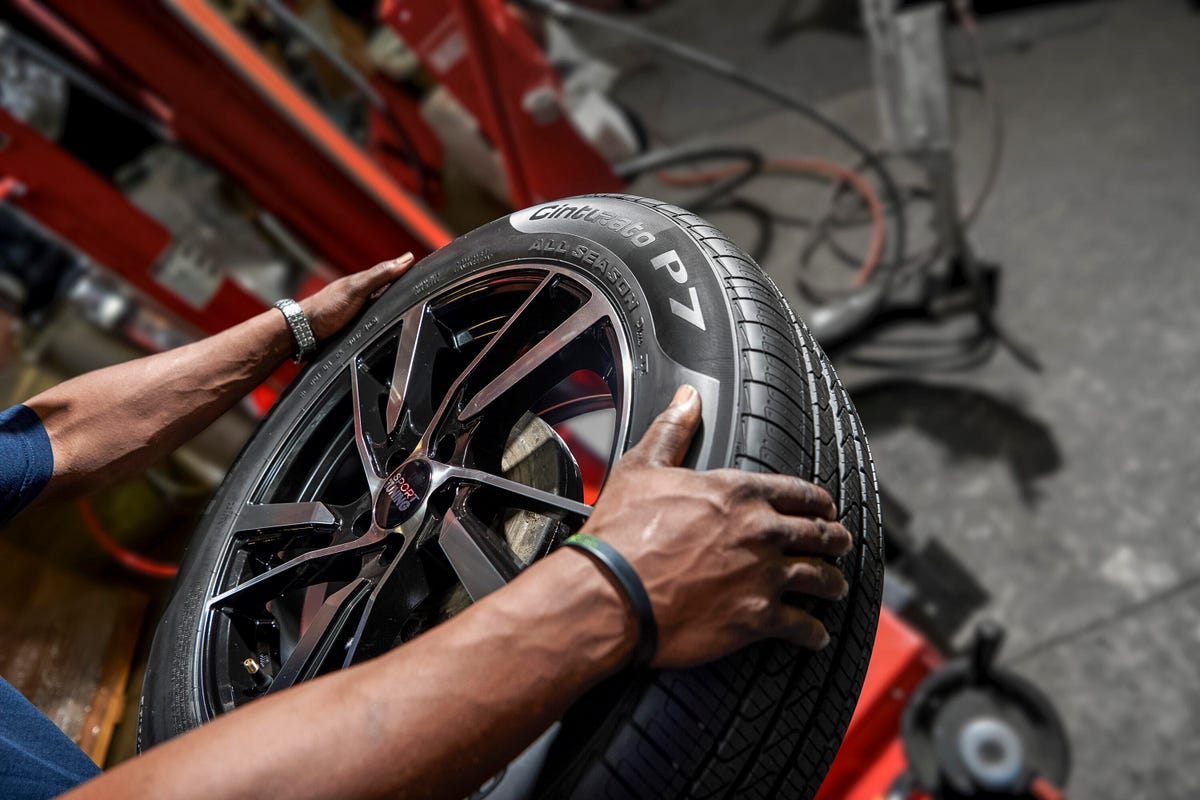
Credit: www.cnet.com
Is It Cheaper to Order Tires Online?
When it comes to shopping for tires, there are a lot of factors to consider. Price is certainly one of the most important factors, but it’s not the only factor. You also have to think about shipping costs, installation costs, and any other fees that might be associated with buying tires online.
With all of that said, let’s answer the question: Is it cheaper to order tires online?The short answer is: It depends.There are a lot of variables that go into tire pricing, and sometimes you can find a better deal online than you can offline.
But sometimes the opposite is true. It really just depends on what kind of tires you’re looking for and where you shop.To get the best deal on tires, we recommend shopping around at both online and offline retailers.
Compare prices and features until you find the perfect set of tires for your car – at the best price possible.
Can I Buy New Tires And Put Them on Myself?
If you’re mechanically inclined and have all the right tools, then yes, you can absolutely replace your own tires. It’s a pretty straightforward process that anyone with some basic knowledge and understanding of cars can do.That being said, it’s always best to consult your car’s owner manual before attempting any type of maintenance or repair, just to be safe.
And if you’re ever unsure about anything, it’s always best to ask a professional for help.Now, let’s get into how to actually replace your tires. The first thing you’ll need to do is jack up your car and remove the old tires.
Once they’re off, simply put the new tires on in their place and lower your car back down. That’s really all there is to it!Of course, there are a few things to keep in mind while doing this process.
First of all, make sure that you’re using the correct size and type of tire for your car. You don’t want to end up with mismatched tires that could potentially cause problems down the road. Secondly, be careful not to damage the rims while changing the tires – it’s very easy to scratch or dent them if you’re not careful.
And lastly, make sure that the new tires are properly inflated before driving off – underinflated tires can lead to blowouts and accidents.All in all, replacing your own tires is a relatively simple task that anyone can do given the right circumstances. Just use caution and common sense, and you should be fine!
Where is the Best Place to Buy Tires Online?
If you’re looking for the best place to buy tires online, you’ll want to consider a few factors. First, you’ll want to make sure that the website you’re considering is reputable and has a good selection of tires. You’ll also want to compare prices and read reviews before making your final decision.
One of the best places to buy tires online is Discount Tire Direct. They have a wide selection of tires from all major brands, and they offer free shipping on orders over $50. You can also find helpful customer reviews on their website.
Another great option is Tire Rack, which offers free shipping on orders over $50 as well.When choosing where to buy tires online, it’s important to compare prices and read reviews before making your final decision. By taking these factors into consideration, you can be sure that you’re getting the best deal on your new tires!
Is Tire Rack Owned by Discount Tire?
No, Tire Rack is not owned by Discount Tire. They are two separate companies. However, Discount Tire does sell tires on Tire Rack’s website.
Conclusion
If you’re looking to buy tires, you may be wondering if it’s worth it to buy them directly from the manufacturer. The answer is yes! Here are a few reasons why:
1. You’ll get the best price. Manufacturer’s often have special deals and promotions that you can take advantage of by buying direct.2. You’ll have more tire choices.
When you buy from a retailer, they may only carry a limited selection of tires from a single manufacturer. But when you buy direct, you can choose from a wide variety of tires from different manufacturers.3. You can get expert advice.
Retailers may not have as much knowledge about tires as the manufacturers themselves. So if you have questions or need help choosing the right tire, buying direct is your best bet.
How to Break in New Performance Tires
If you’re looking to get the most out of your new performance tires, there are a few things you can do to break them in properly. First, avoid any hard acceleration or braking for the first few miles. This will help the tires seat properly and prevent any uneven wear.
Next, keep your speed reasonable for the first few hundred miles. Once the tires are fully seated, you can start pushing them harder. But even then, it’s important to avoid excessive wheel spin and sliding, as this can cause premature tire wear.
With a little care and patience, you’ll be able to enjoy your new tires for many miles to come.
- Make sure your new tires are the right size and type for your vehicle
- Check the air pressure in all four tires
- New tires usually come with more air than is needed, so you may need to let some out
- Find a safe place to drive where you can go fast without endangering yourself or others
- An empty parking lot or country road would be ideal
- Accelerate slowly at first to around 30 miles per hour, then brake gently to bring the car to a stop
- Repeat this process several times, gradually increasing your speed each time until you reach around 50 miles per hour
- 6 Once you’ve done this a few times, you can start driving normally on your new tires
2 Minute Moto – Do You Need To Break In New Tires?
How Do You Break in Tires Faster?
There’s no one answer to this question since there are a few different ways to break in tires, and the best method may vary depending on the type of tire you have. However, here are a few tips that may help you get the job done quickly and efficiently:1. Use a tire breaking compound: This is a special chemical that helps soften the rubber of your tires, making them more pliable and easier to work with.
You can find these compounds at most auto parts stores.2. Heat up your tires: This can be done with a heat gun or by simply driving around for awhile before you start working on them. The heat will help make the rubber more flexible, making it easier to break in.
3. Be patient: It takes time and patience to properly break in tires. Don’t try to rush the process or you may end up damaging your tires instead of helping them last longer.
How Long Till New Tires Break In?
Most people believe that it takes several thousand miles for new tires to break in and achieve their optimum performance level. However, the truth is that it only takes a few hundred miles for this to happen. The reason why most people think that it takes longer is because during the first few hundred miles, the tire’s tread pattern is still smooth and not yet optimized for gripping the road.
Once the tire’s tread pattern has become more defined, they will offer better traction and grip.
Are Performance Tires Good for Daily Driving?
When it comes to your daily driver, the tires you choose make a big difference in how your car handles and how comfortable your ride is. There are a lot of different types of tires on the market, but performance tires are a great option for many drivers. Here’s a look at some of the benefits of performance tires for daily driving:
Better Handling: Performance tires are designed to provide better grip and handling than standard passenger car tires. This means that they can help you keep control of your car in all kinds of conditions, from wet weather to tight turns.Better Braking: Performance tires also offer shorter braking distances than regular tires, so you can stop quicker if you need to.
This can be a real lifesaver in an emergency situation.Comfort: Believe it or not, performance tires can actually provide a more comfortable ride than regular passenger car tires. That’s because they’re designed to absorb road vibrations and minimize road noise, making for a smoother ride overall.
Do New Tires Ride Rough at First?
If you’re like most people, you probably don’t think much about your car’s tires. But they play a vitally important role in keeping you safe on the road. So it’s important to make sure they’re in good condition and properly inflated.
It’s also important to know that new tires may ride a bit rough at first. That’s because the surface of the tire is smooth when it’s new. But as you drive, the surface of the tire gets scuffed up by contact with the road.
This scuffing process is called “breaking in” and it makes the tire more grippy so it can better grip the road, especially in wet or icy conditions.The breaking-in process can take anywhere from a few hundred miles to a few thousand miles. And during this time, you may notice that your car rides a bit rougher than usual.
The good news is that once your tires are broken in, they’ll ride much smoother and provide better traction and handling.
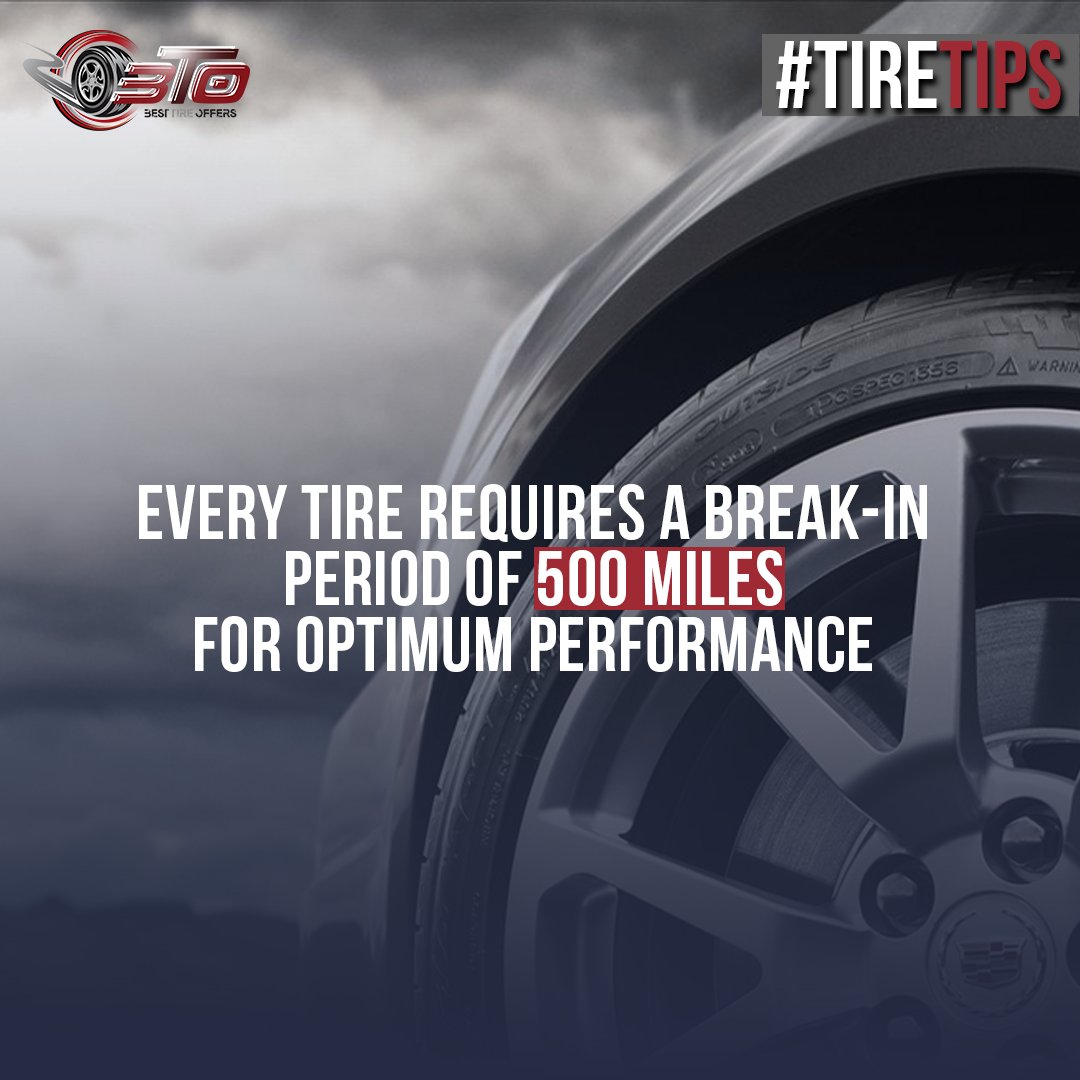
Credit: twitter.com
Car Feels Slower With New Tires
If you’ve ever swapped out your old tires for new ones, you may have noticed that your car feels slower afterwards. This is because new tires are generally made from harder rubber than older tires. Harder rubber takes longer to deform when it hits a pothole or other object in the road, which means that your car will take longer to slow down or stop when you hit the brakes.
If you’re used to the way your car handled with old tires, the difference can be significant.There are a few things you can do to counteract this effect. First, make sure that your new tires are properly inflated.
Overinflated tires will provide less contact with the road and make your car feel even slower. Second, take some time to get used to the way your car handles with new tires before driving in any difficult or dangerous conditions. Once you know how they’ll react, you’ll be able to drive more confidently and avoid any potential accidents.
In general, though, there’s no need to worry about getting new tires – they may make your car feel different at first but you’ll quickly get used to it and appreciate the improved safety and handling they provide.
New Tire Break in Noise
If you’ve ever purchased new tires for your car, you may have noticed that they sometimes make a loud, squealing noise when you first start driving. This is called “tire break in noise” and it’s perfectly normal. Here’s what causes it and how to make it stop.
When tires are first manufactured, the treads are very smooth. Over time, as the tires are used, the treads begin to wear down and become less smooth. This process is accelerated by things like heat, UV rays, and chemicals on the road.
The squealing noise that you hear when breaking in new tires is caused by this roughness. As the tire rotates, it rubs against the road surface and creates friction. The sound is actually created by vibrations that occur as a result of this friction.
Fortunately, there’s an easy fix for tire break in noise – simply drive your car for a few hundred miles and the problem will go away on its own! The reason for this is that as the tires continue to wear down, they’ll eventually reach a point where their treads are no longer rough. At that point, there’ll be no more squealing when you brake.
So if you’re hearing tire break in noise after purchasing new tires, don’t worry – it’s perfectly normal and will go away on its own after a little while!
Michelin Tire Break in Period
When you get a new set of Michelin tires, it’s important to follow the break-in period instructions. This will help ensure that your tires perform well and last long. Here are the details of the Michelin tire break-in period:
For the first 100 miles (160 km), avoid sudden acceleration, hard braking, and sharp turns. This allows the tread blocks and shoulder area to seat properly.After the initial 100 miles (160 km), drive normally but avoid extended high speed driving for the next 600 miles (1,000 km).
During this time, gradually increase your speeds and test out different maneuvers within reason.Once you’ve completed the break-in period, your Michelin tires should be ready to provide optimal performance!
Conclusion
If your car is new, or if you’ve never changed your own tires before, it’s important to know how to break in new performance tires. Here are a few tips:1. Don’t push too hard too soon – go easy on the gas and brakes for the first few hundred miles.
This will help the tires seat properly and form a good bond with the wheels.2. Avoid potholes and other hazards – this seems like common sense, but it’s especially important with new tires since they’re more susceptible to damage.3. Get them balanced and aligned – this will help extend their life and improve your ride quality.
4. Follow the manufacturer’s recommendations – they know their product best, so trust their instructions on how to care for your new tires.

